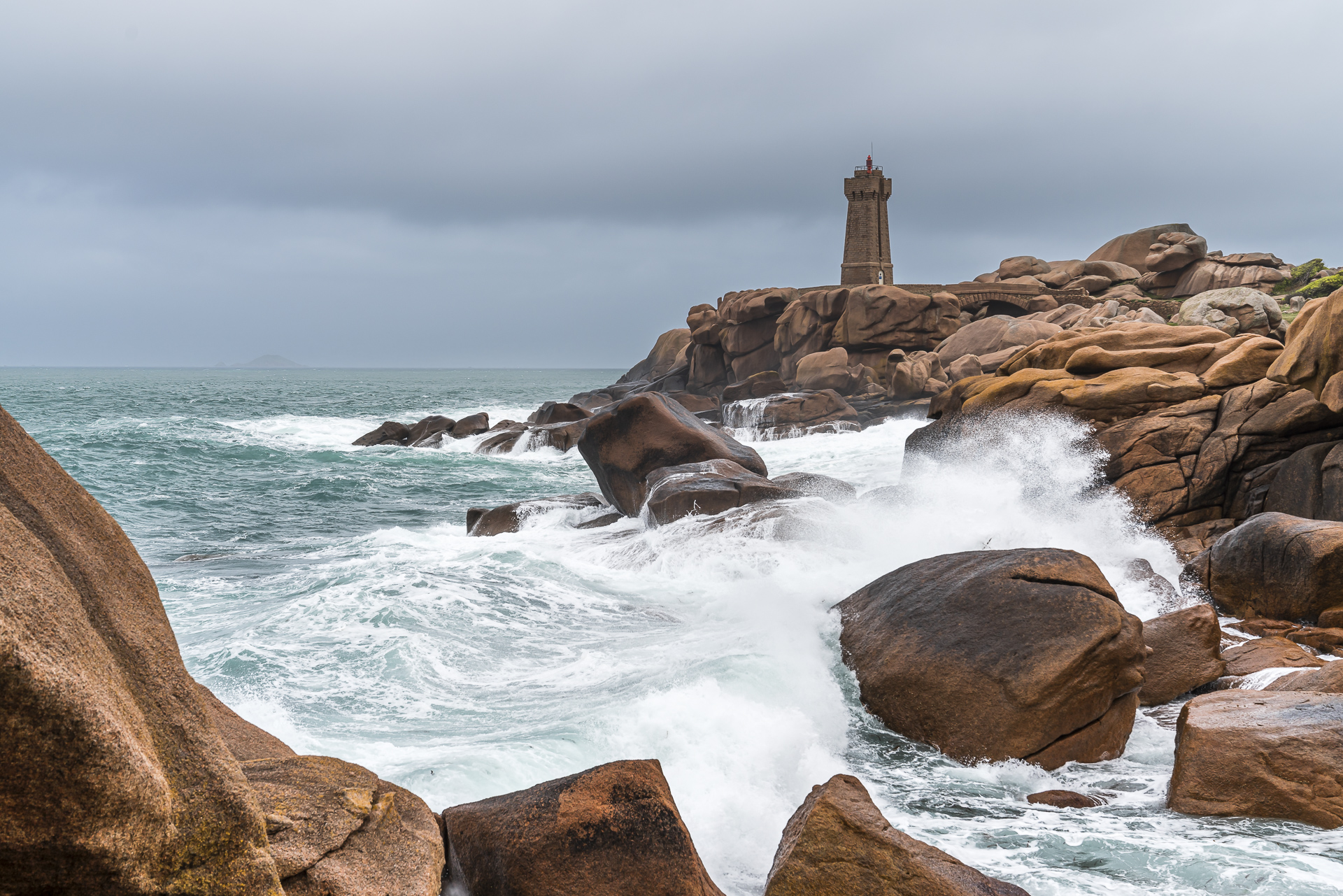
Brittany attractions: 15 tips for planning your trip (with map)
Advertising: Contribution in collaboration with Tourisme Bretagne
With 2,700 kilometres of coastline and no place more than 60 kilometres from the sea, Brittany attracts visitors with its multifaceted coastline and small towns full of character. Located in the northwest of France, the region is therefore the perfect destination for those whose holidays offer a successful mix of nature experiences and moments of pleasureIf you want to know more about it, you should We were able to convince ourselves of this during a one-week round trip and let you know this Participate in our travel highlights.
The sights of Brittany at a glance
We spent five days exploring the northwest coast between Saint-Brieuc and Roscoff from Rennes with a rental car. The last third of the Brittany trip brought us back to Rennes via the so-called “green centre”. In the map below you will find all the sights mentioned in this article, places worth seeing as well as recommended accommodations and restaurants.
1. The old town of Rennes
Rennes was our start and end point of the trip. Unfortunately, with the available time budget of seven days, we had little time to get a first impression of the Breton capital. At least it was enough for a morning walk through the cobblestone streets of the old town. I like the mix of partly crooked, colorful half-timbered houses and magnificent Renaissance buildings right away.
We pass through the Portes Mordelaises, once the main entrance to the city and now one of the few remains of the ramparts of Rennes. Following the Rue des Portes Mordelaises, we reach the cathedral of Rennes. Not far away is the Town Hall Square, which is lined with the opera house and the town hall, another historic sight.
If you want to delve deeper into the history of Rennes and also visit one or the other museum, you should take at least a full day – even better 1.5 days – time.
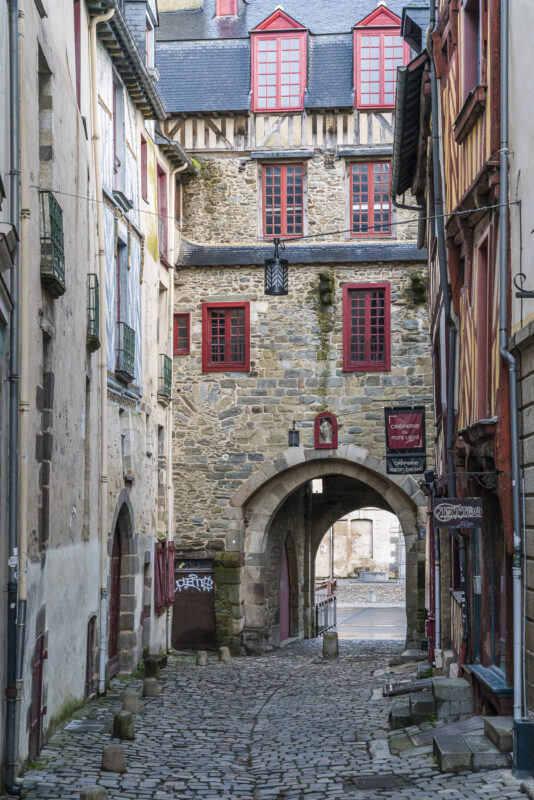
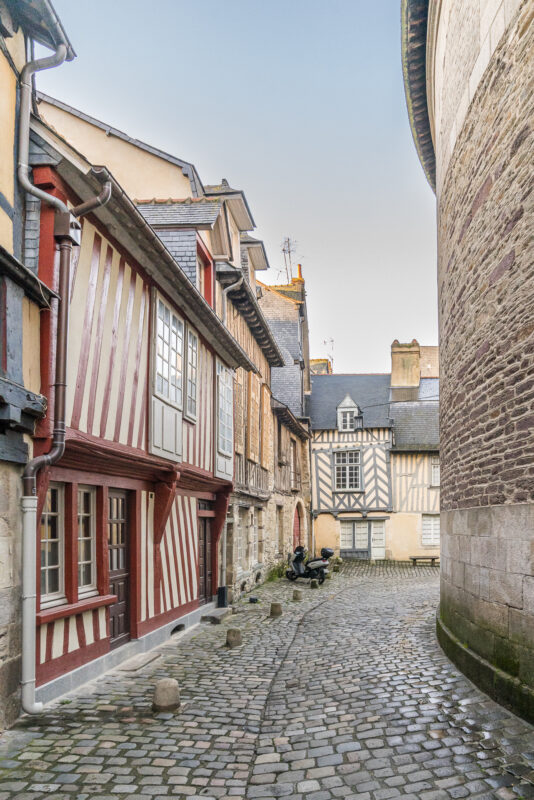
Our hotel tip for Rennes
We stayed in the most central location right next to the Place des Lices in the newly opened Hotel Mama Shelter Rennes. A great location to explore the old town of Rennes on foot. In addition, there is a fantastic view over the rooftops of the city center from the rooftop restaurant. This hotel, which is part of the Accor Group, is a solid choice for a short stay in Rennes.
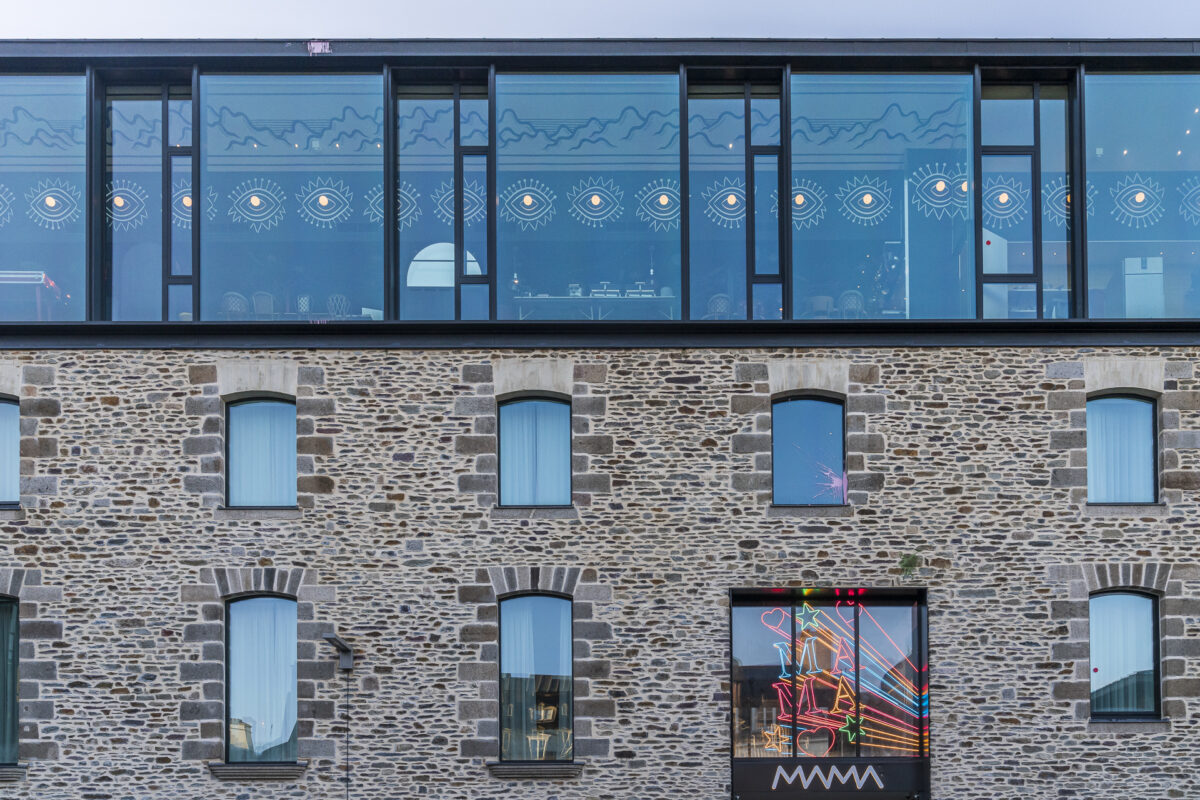
Extra tip: Every Saturday, the so-called “Marché des Lices”, one of the largest and most traditional farmers’ markets in France, takes place right in front of the Mama Shelter on the Place des Lices.
Our restaurant recommendations in Rennes
We made the best possible use of our short time in Rennes and tried two recommendable restaurants. On the one hand, there is the Michelin-starred “Racines“, where chef Virginie Giboire attaches great importance to a mixed team and fresh, seasonal dishes. In the evening, the tasting menu is available from 95 euros. At lunchtime, you can also try your hand at a three-course meal for 70 euros.
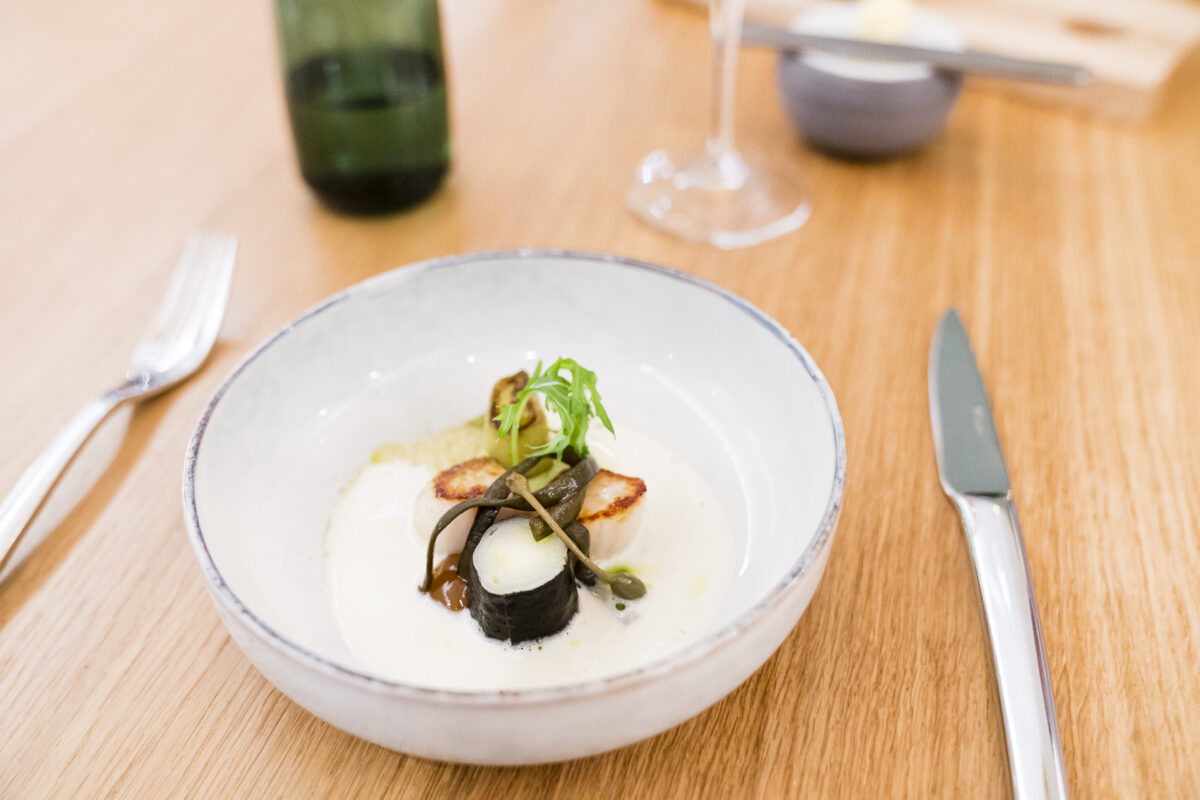
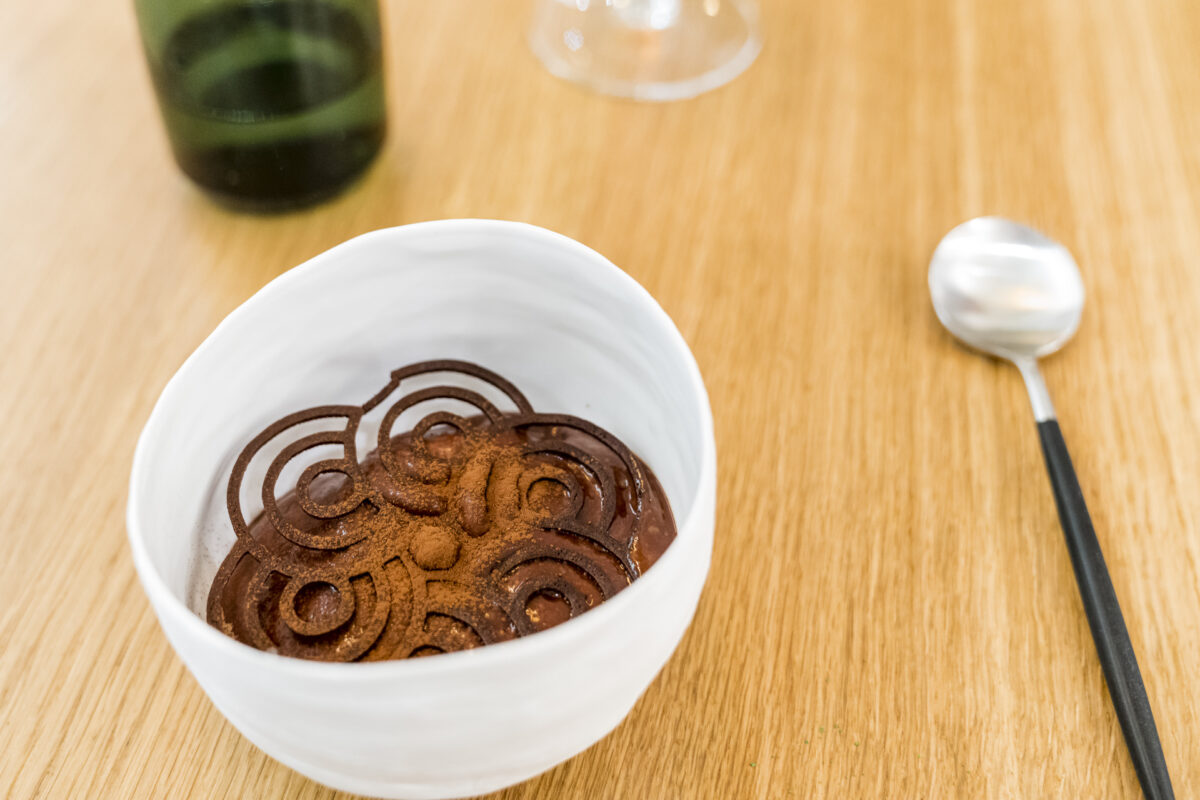
The second restaurant – le Paris-Brest by Christian le Squer – is located directly in the new Rennes railway station, which was completed in 2020. Three-star chef Christian le Squer (Le Cinq, Paris) is responsible for the kitchen concept. In my opinion, the combination of successful interior design, friendly service and inexpensive dishes (the 3-course menu de Saison is available for 39 euros) is reason enough to deliberately extend the stopover at Rennes station by two hours.
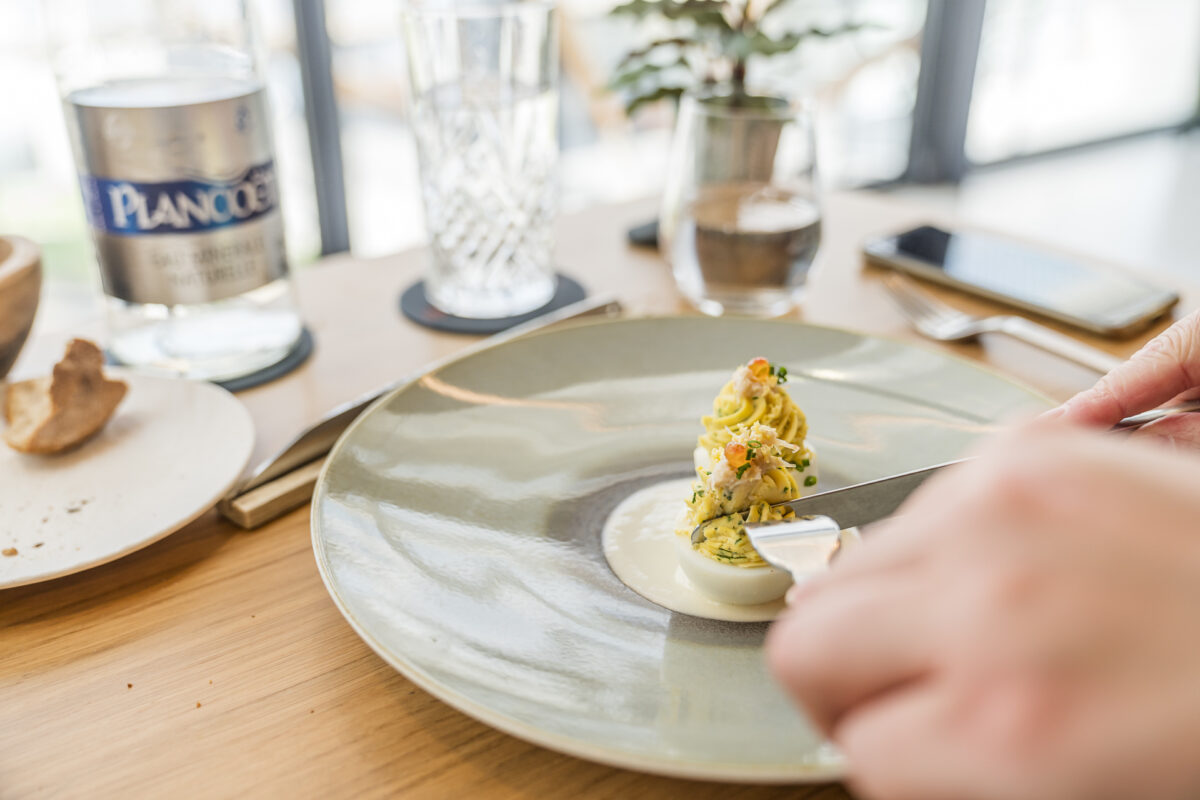
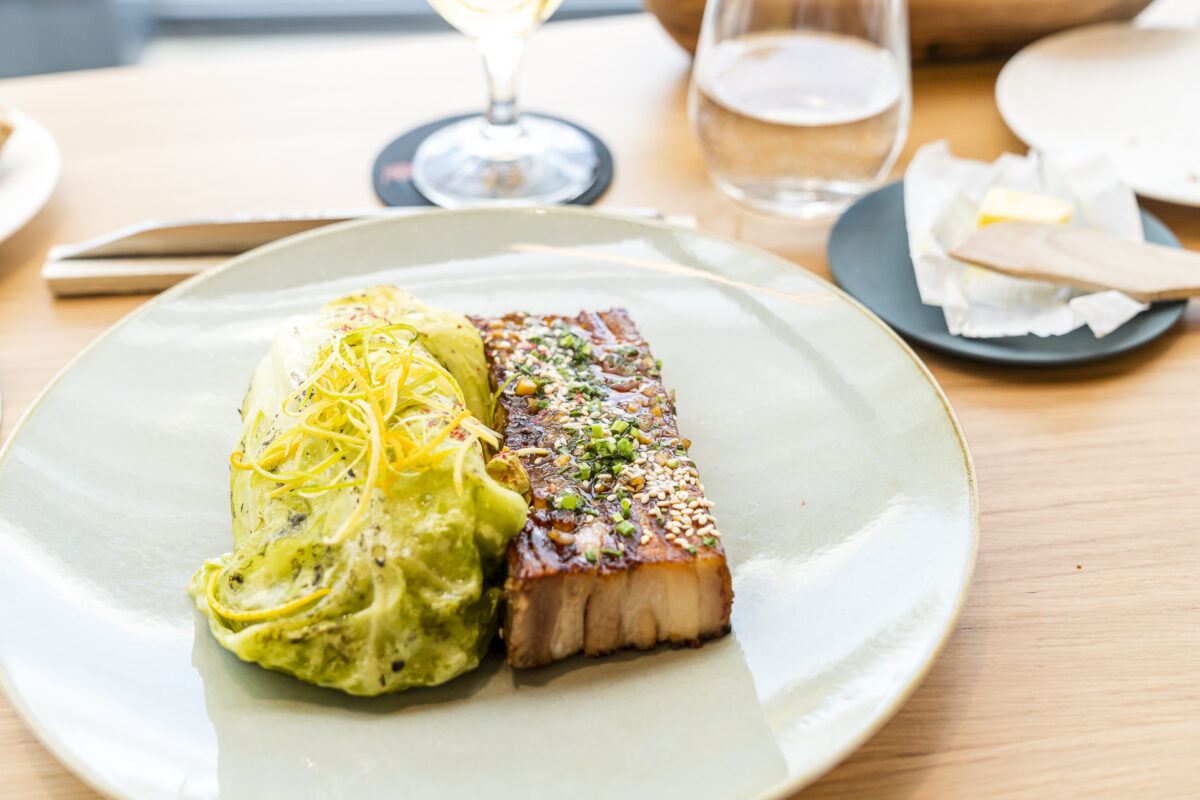
2. The Route des Falaises
From Rennes, we first head for the bay of Saint-Brieuc by rental car. Our destination for the day – Paimpol – is a good 140 kilometres away. Instead of taking the most direct route to Paimpol, we opt for the 14-kilometre-long panoramic route along the “Route des Falaises“. This leads from Saint-Quay-Portrieux along the cliffs to Paimpol. In between, numerous beautiful viewpoints and other sights await you, such as the old windmills “Moulin à vent du Craca”.
The Pointe de Plouha offers particularly impressive views. The cliffs plunge 104 metres into the depths, making it the highest point on the Route des Falaises. It is also worth stopping at the secluded bay of “Gwin Zegal”, the viewpoint above Bréhec, as well as at the Pointe de Minard and the Pointe de Bilfot.
By the way, the places can also be discovered by bike or on foot. The long-distance cycle path “La Vélomaritime” and the popular customs officers’ path (GR 34) also follow the course of the “Route des Falaises”. For me, it’s definitely one of the most beautiful stretches of coastline that you should plan at least half a day to explore.
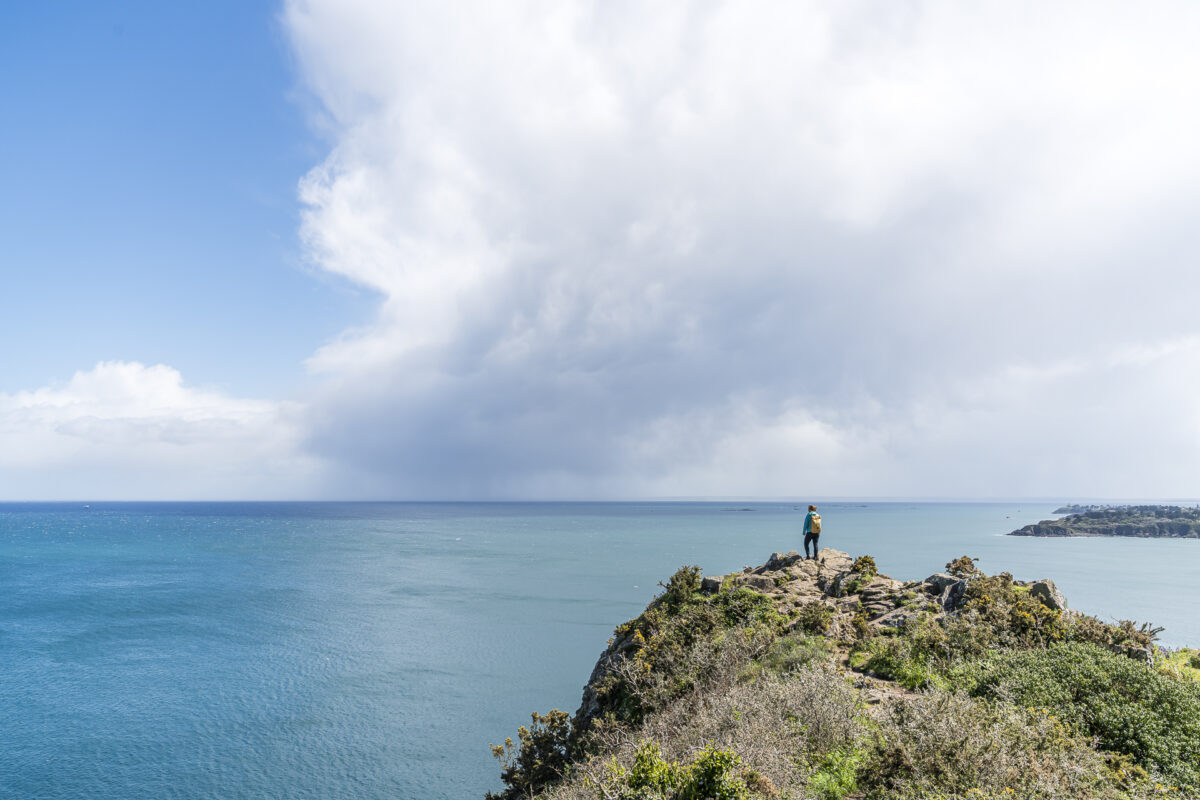
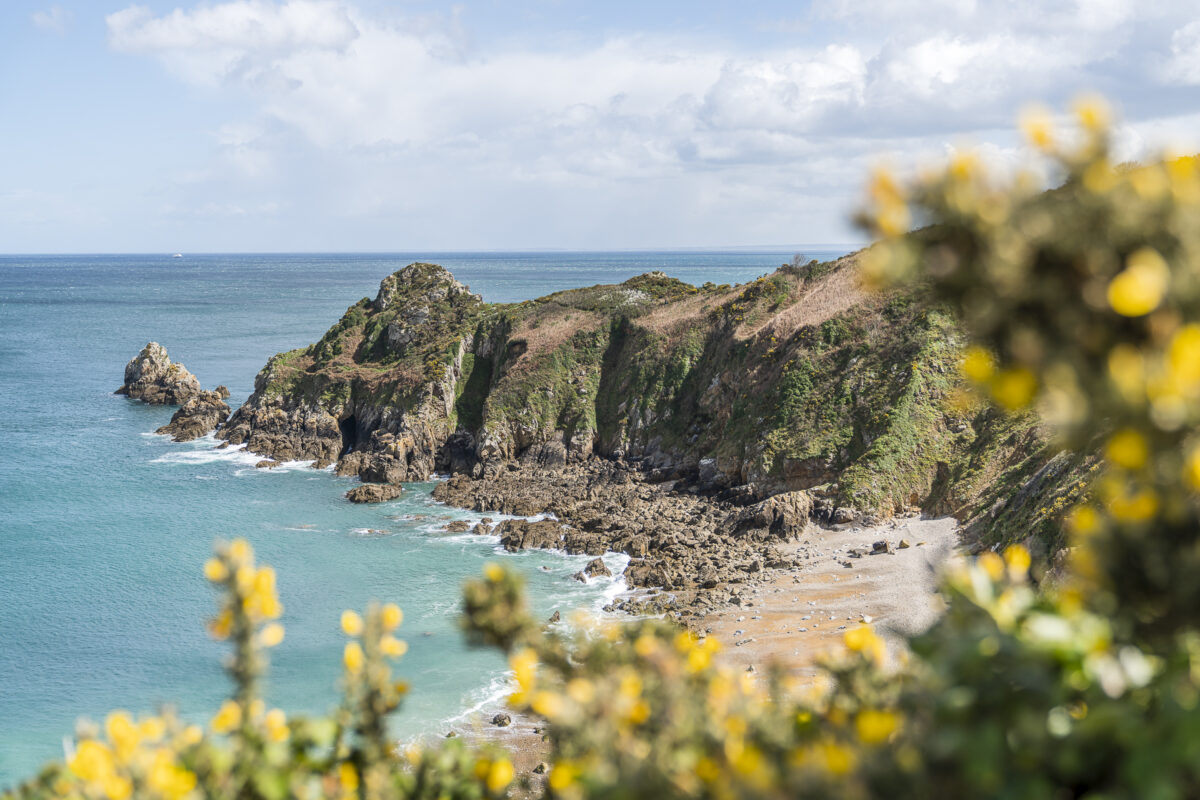
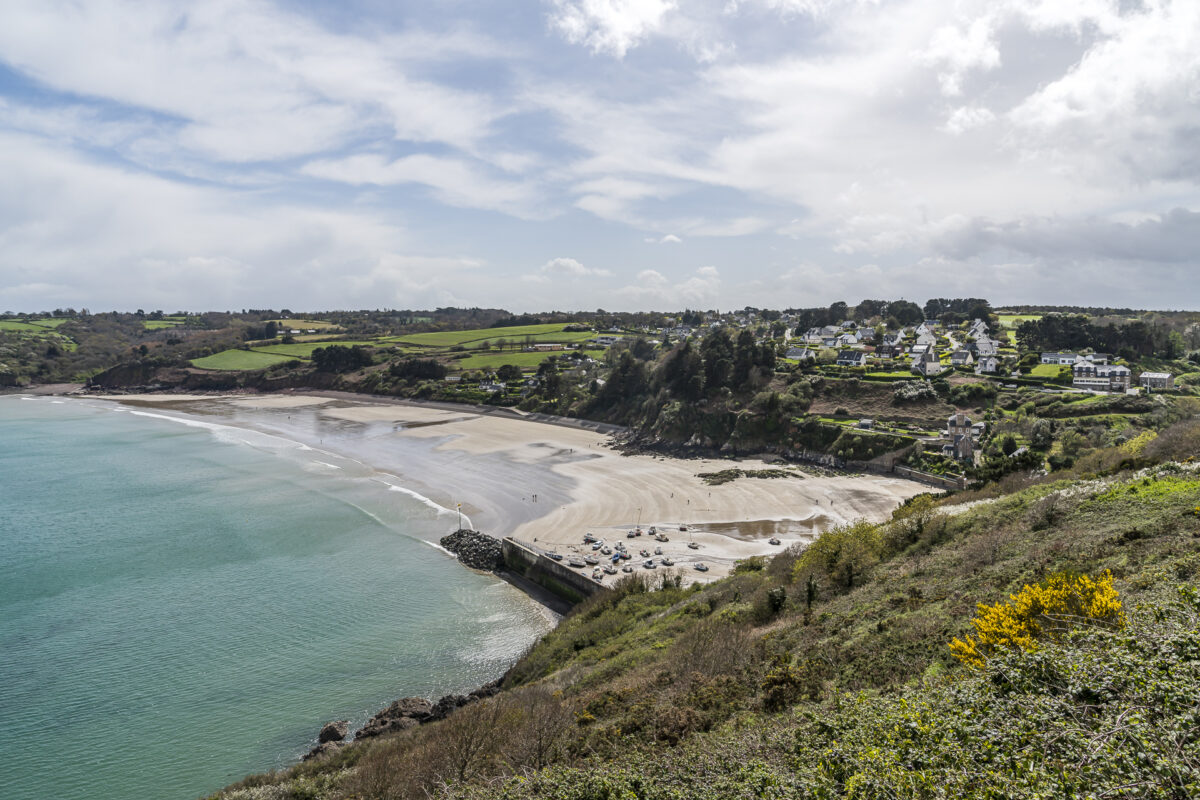
3. The fishing village of Paimpol
Today, the tranquil port town of Paimpol lives from oyster farming and tourism. The harbour basin is lined with colourful, closely lined house facades and looks very lively thanks to the numerous restaurants, most of which are well frequented. In my opinion, it is worthwhile to take a detour via the Place du Martray and follow the narrow streets through the city centre before stopping for a bite to eat.
Unfortunately, during our visit, the restaurants that we would have found the most exciting based on our preliminary research were closed. We would have loved to try the Atelier de Corentin as well as the “La Criée“, which is located directly on the harbour. In the end, however, we also had a good meal in the restaurant L’islandais and “Le Neptune”.
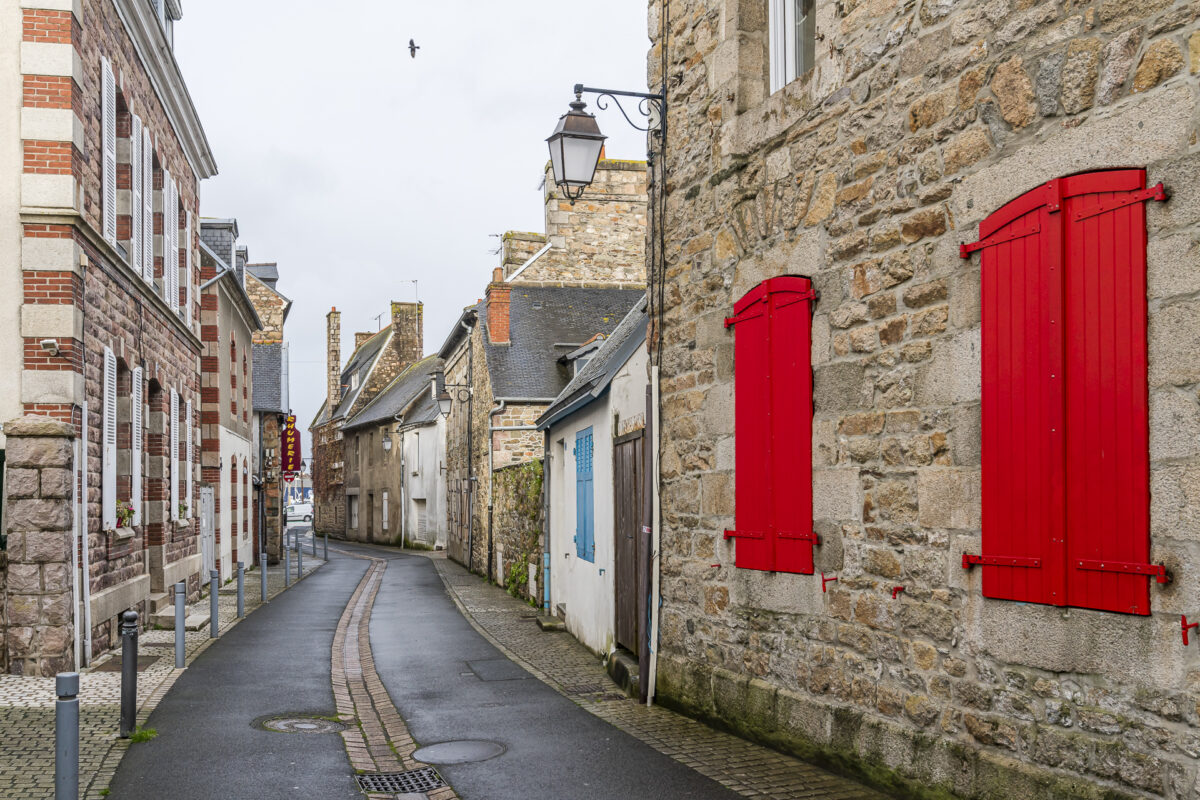
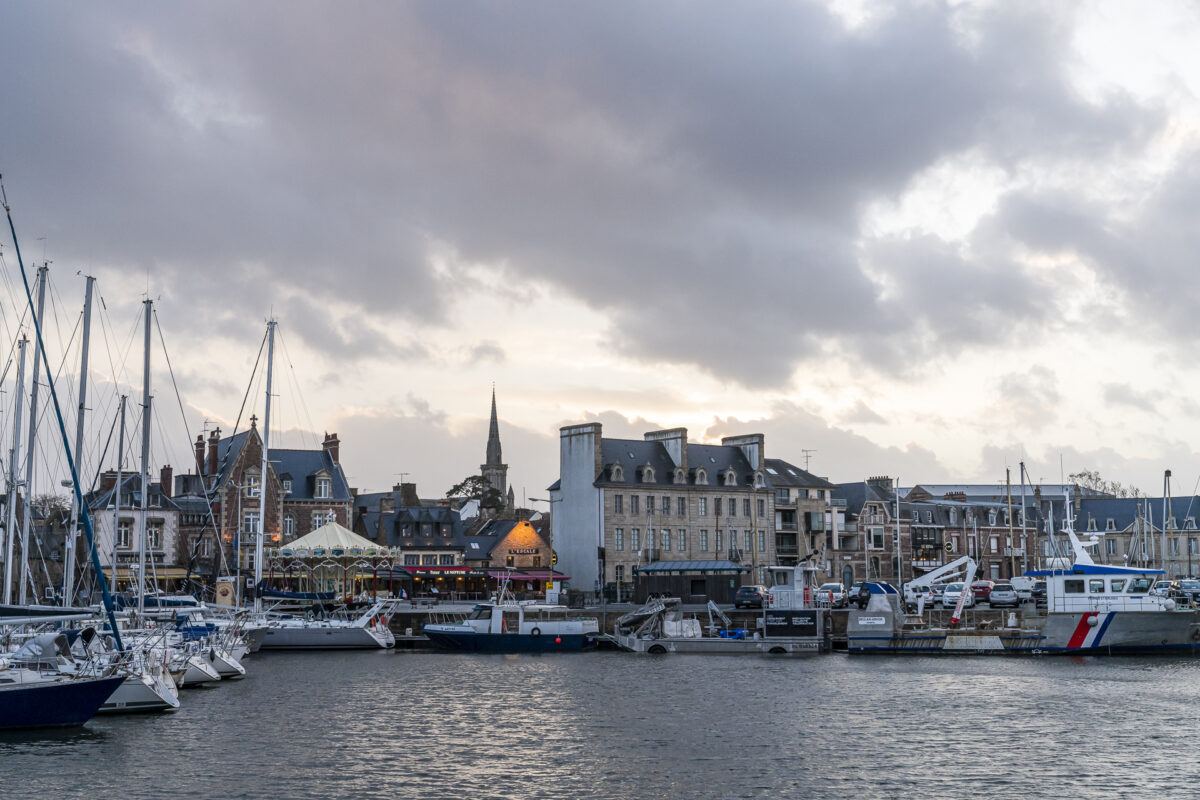
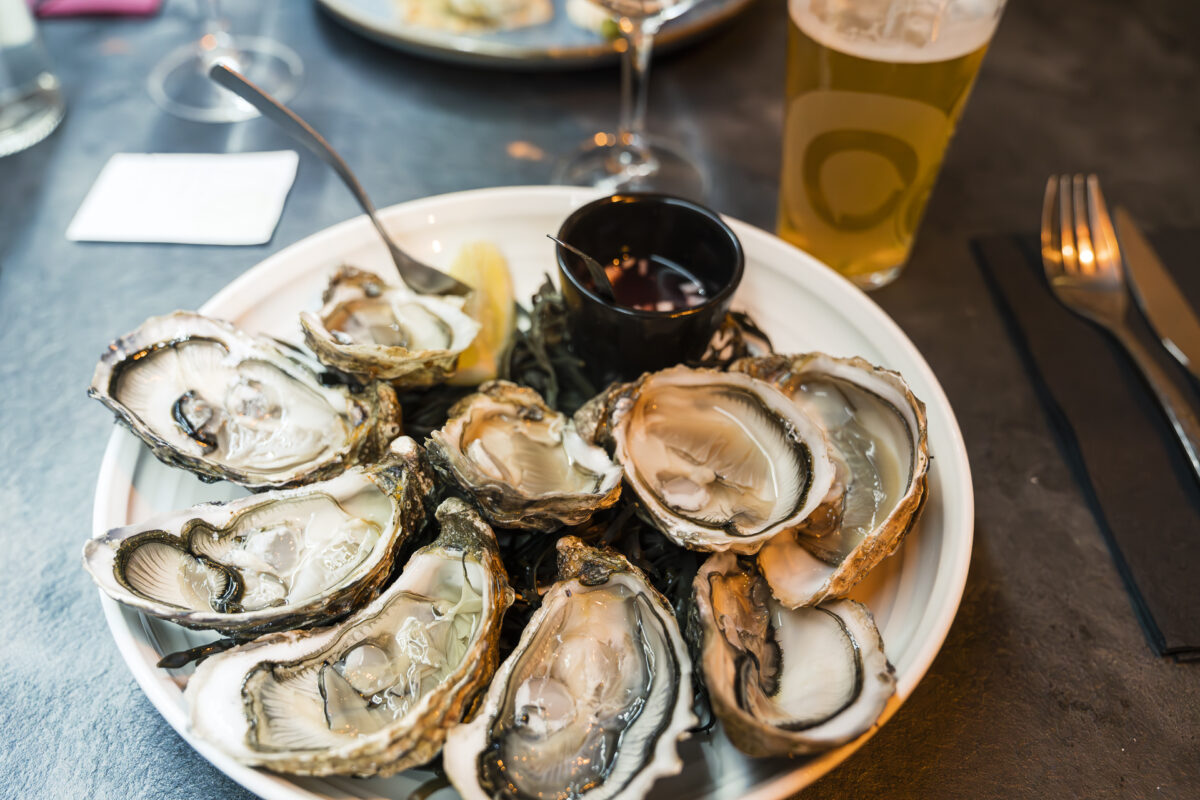
4. Beauport Abbey + Gîte du moulin
A ten-minute drive outside of Paimpol is the Abbey of Beauport. Founded in 1202, the monastery complex is located directly on the coast and is surrounded by beautiful, extensive gardens. In addition, the vaults of the former monastery are also used for art exhibitions. During our visit, for example, an exhibition was taking place that dealt with the consequences of climate change on the flora and fauna of the bay of Saint-Brieuc.
The monastery complex also includes the so-called “Gîte du Moulin“. A mill converted into a holiday home that can accommodate four people. From the gîte you can enjoy a direct view of the sea – and the loving furnishings, the location and everything around it is just perfect! If you are looking for a wonderfully located base for a holiday week in the bay of Saint-Brieuc, you should definitely take a closer look at this accommodation. Especially since the price of accommodation also supports the management and preservation of the historic complex.
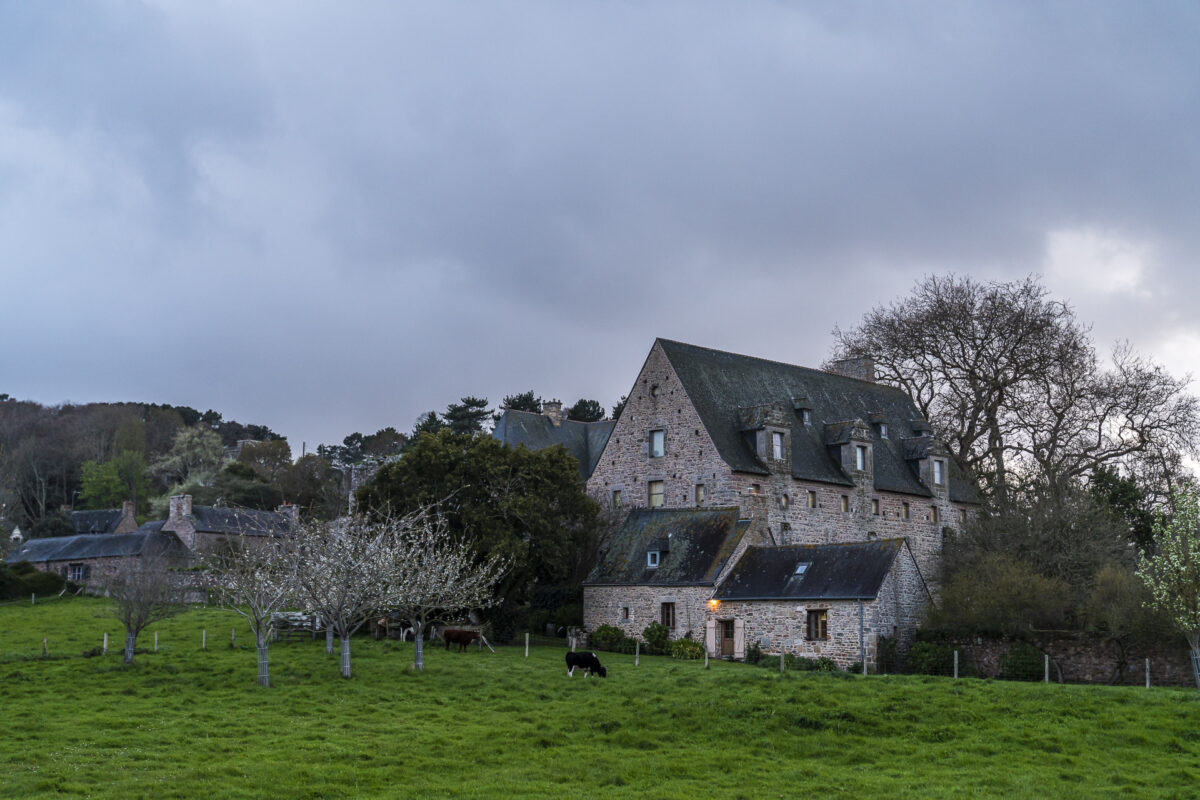
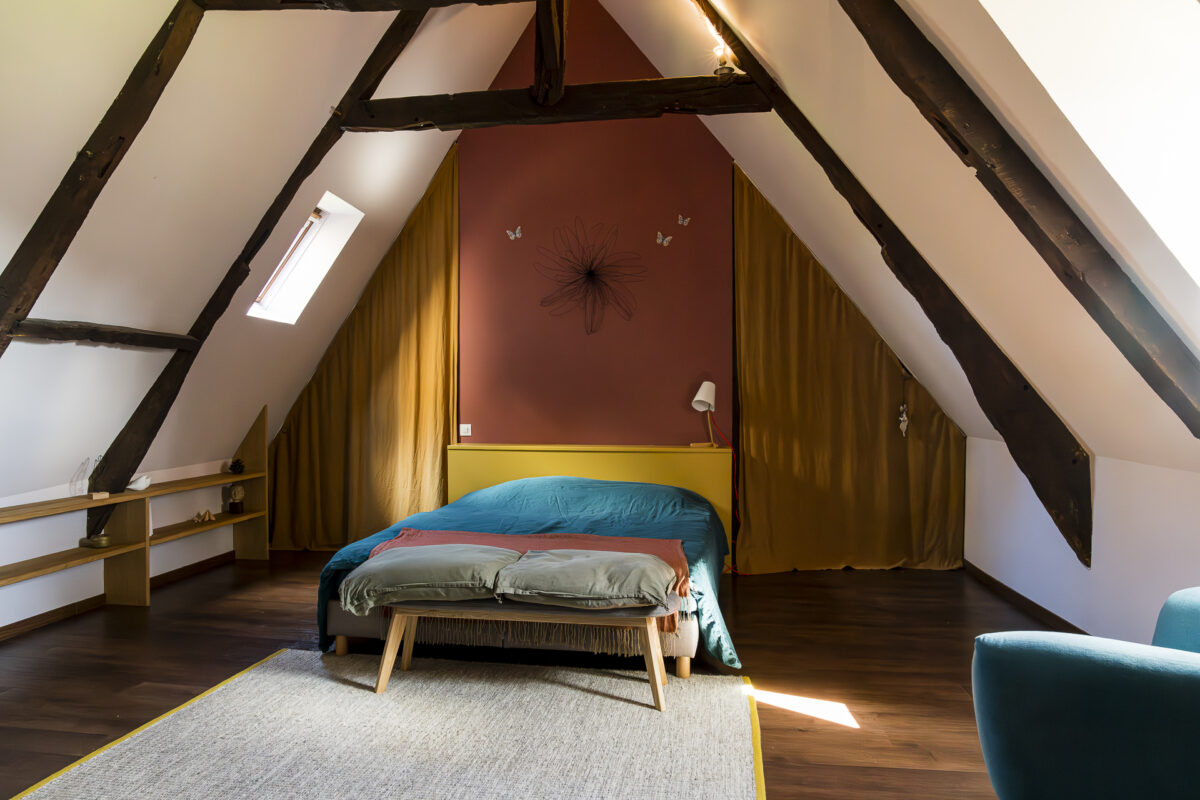
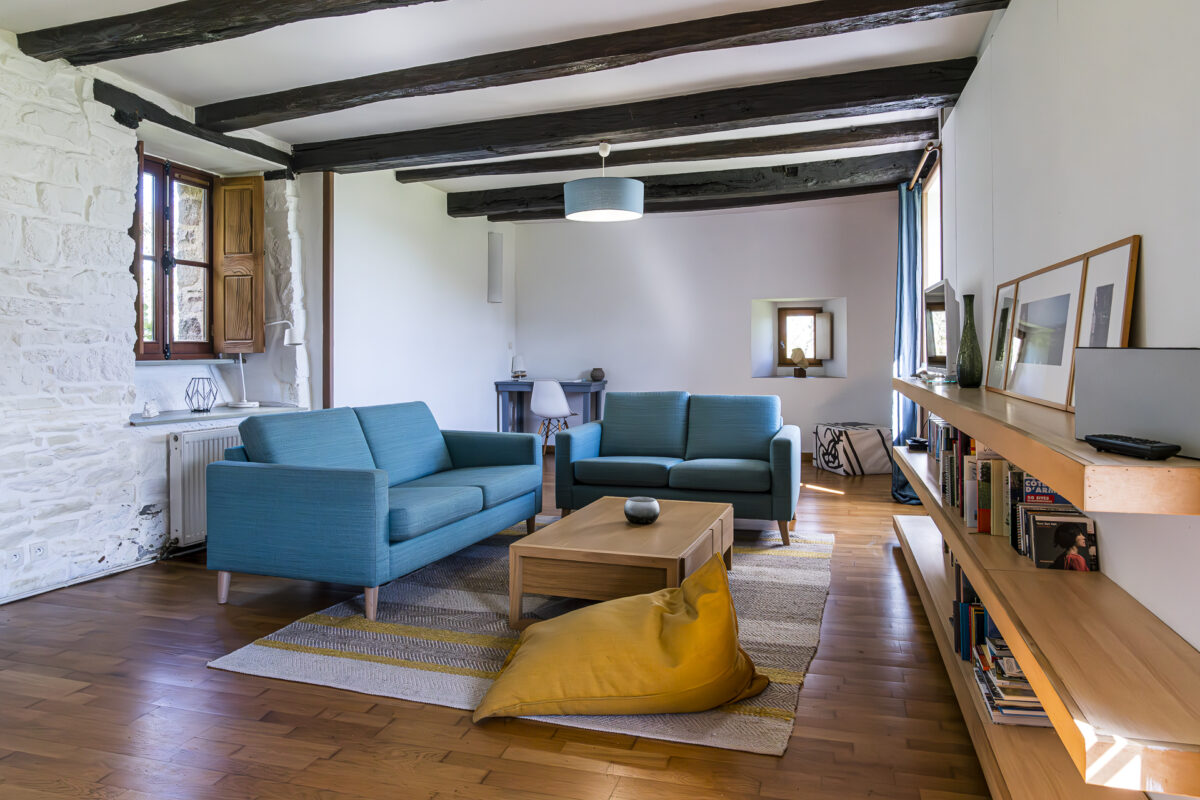
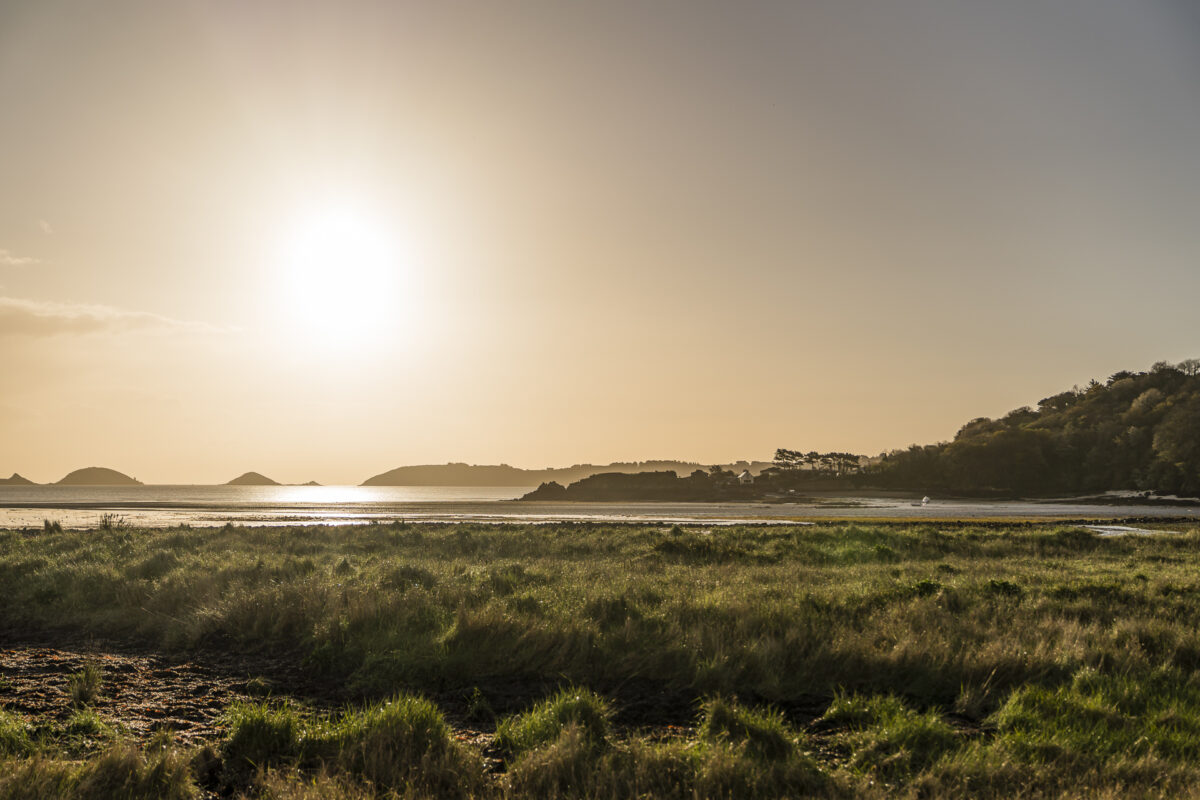
The opening hours of the monastery complex vary depending on the season | the entrance fee is 6.50 euros | Price per night at the Gîte du Moulin from 140 euros | More info: https://abbayebeauport.com/
5. La Roche-Jagu Castle
The next morning we are woken up early by the first rays of sunshine. The bay of Saint-Brieuc presents itself from its most beautiful side this morning. Accordingly, it is difficult for us to say goodbye. And it’s already clear that the overnight stay in the Gîte du Moulin is one of the highlights of our trip to Brittany.
We now continue to the small town of Guingamp, about 30 kilometers further inland. We combine the trip there with a detour to the Château de la Roche-Jagu, which proudly towers high above the mouth of the Trieux River. We are just a little too early to admire the well-kept parks around the castle in their full splendor. But the magnificent view of the river loop alone is reason enough for the stopover (especially since the gardens and walking paths around the castle are accessible free of charge).
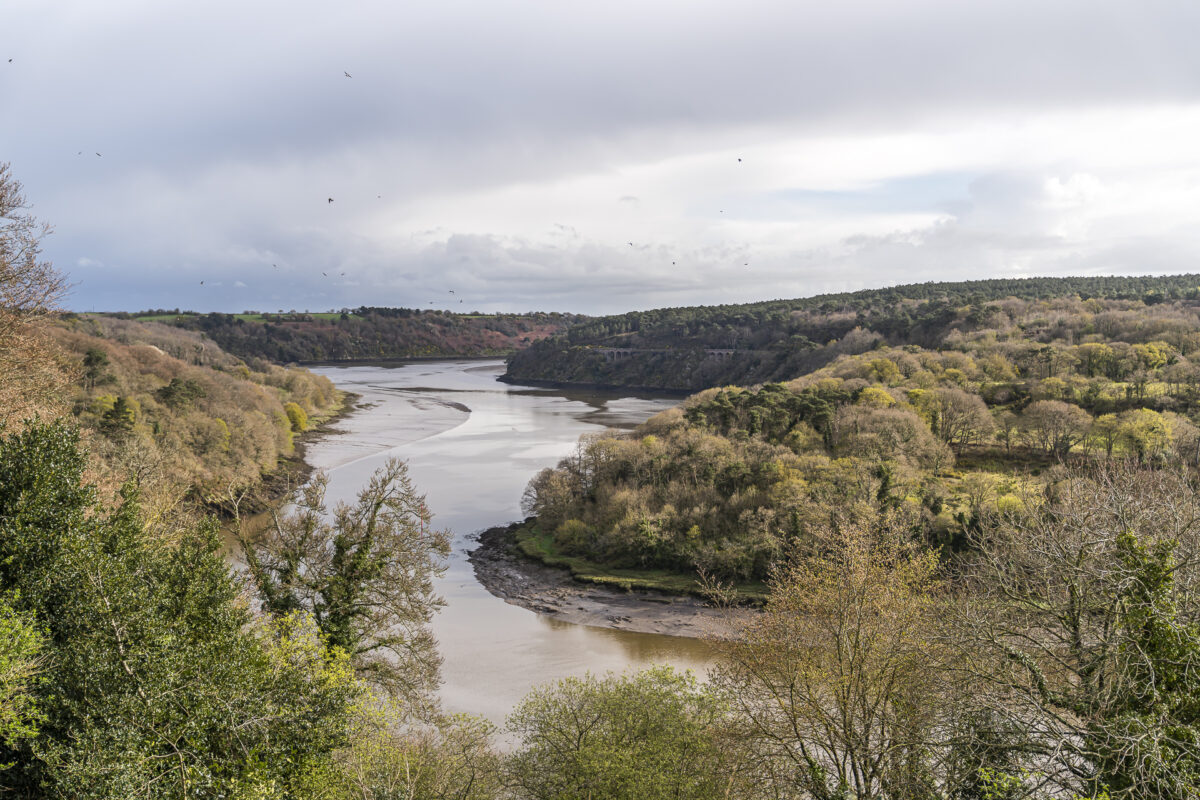
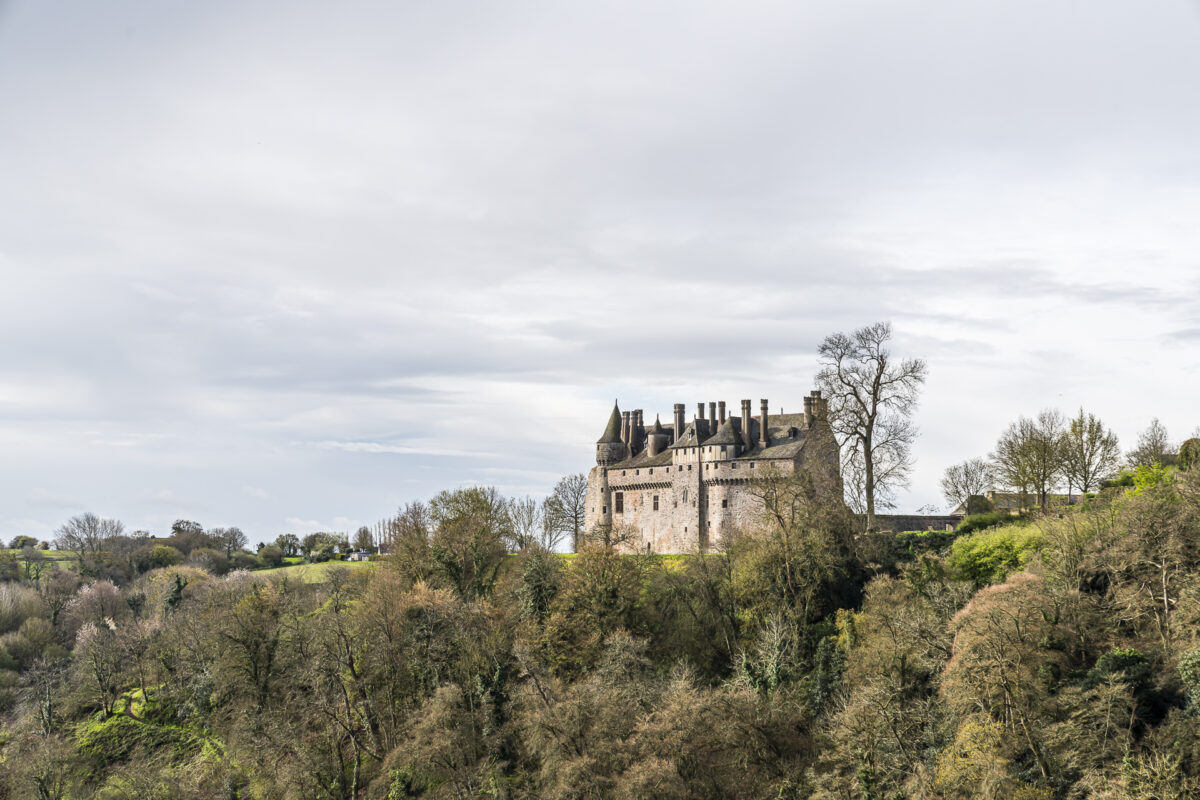
Another place worth visiting on the route between Paimpol and Guingamp is the village of Pontrieux, located on the Trieux.
6. The characterful small town of Guingamp
Around noon we reach the small town of Guingamp. Like Pontrieux, it is one of the so-called “22 places of character in Brittany”. These are all places that have a well-preserved old town and a rich cultural heritage. We quickly fell for the charm of Guingamp. Following the Rue Notre Dame, we are guided purposefully to the buildings worth seeing. Here, too, a colourful mix of half-timbered buildings, granite houses and Renaissance buildings.
The remains of the ramparts at the Château de Pierre II and the prison, built in 1841 according to the American model, are worth seeing. This was recently renovated and now houses the GwinZegal Art Centre.
The city scenery is particularly beautiful from the so-called “Passerelle sur le Trieux“. And be sure to keep an eye out for four monumental, somewhat surreal-looking art installations in public space during your city tour. The latest work “Sitis” (an oversized deer) was released in spring 2022. According to media reports, it can be assumed that a fifth work of art will be erected this year.
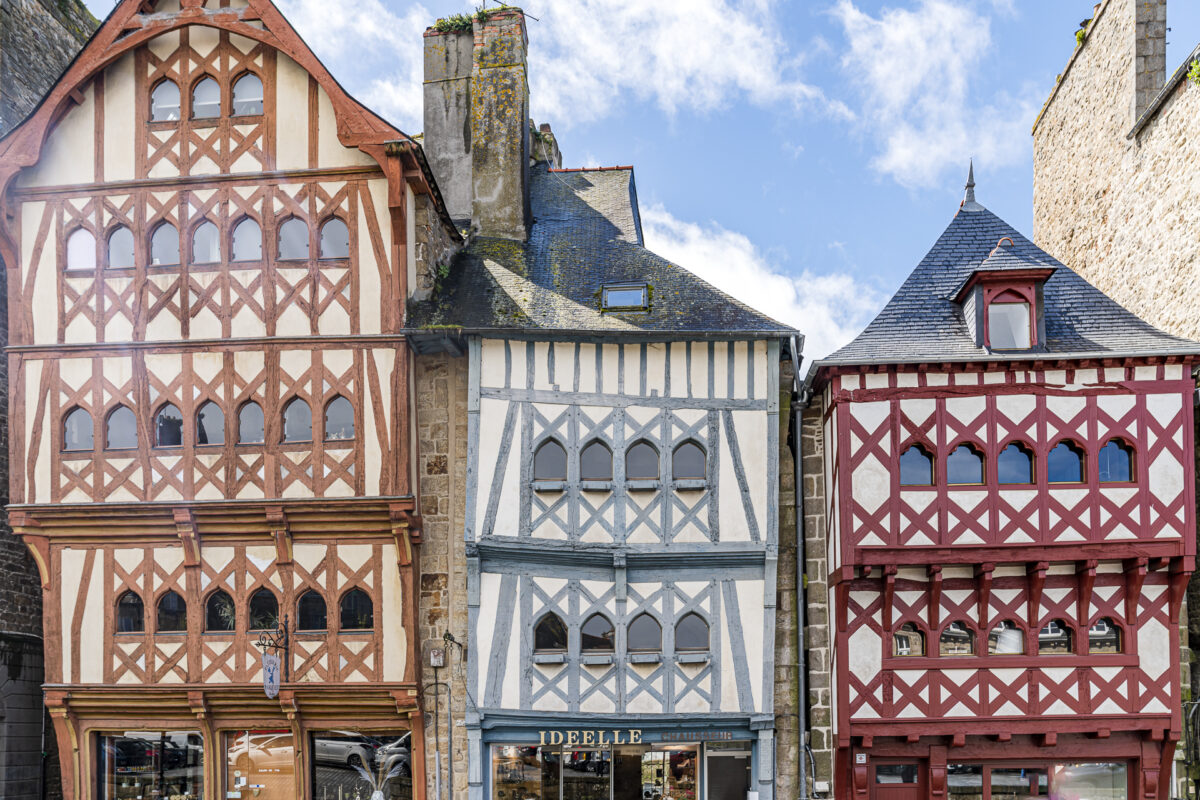
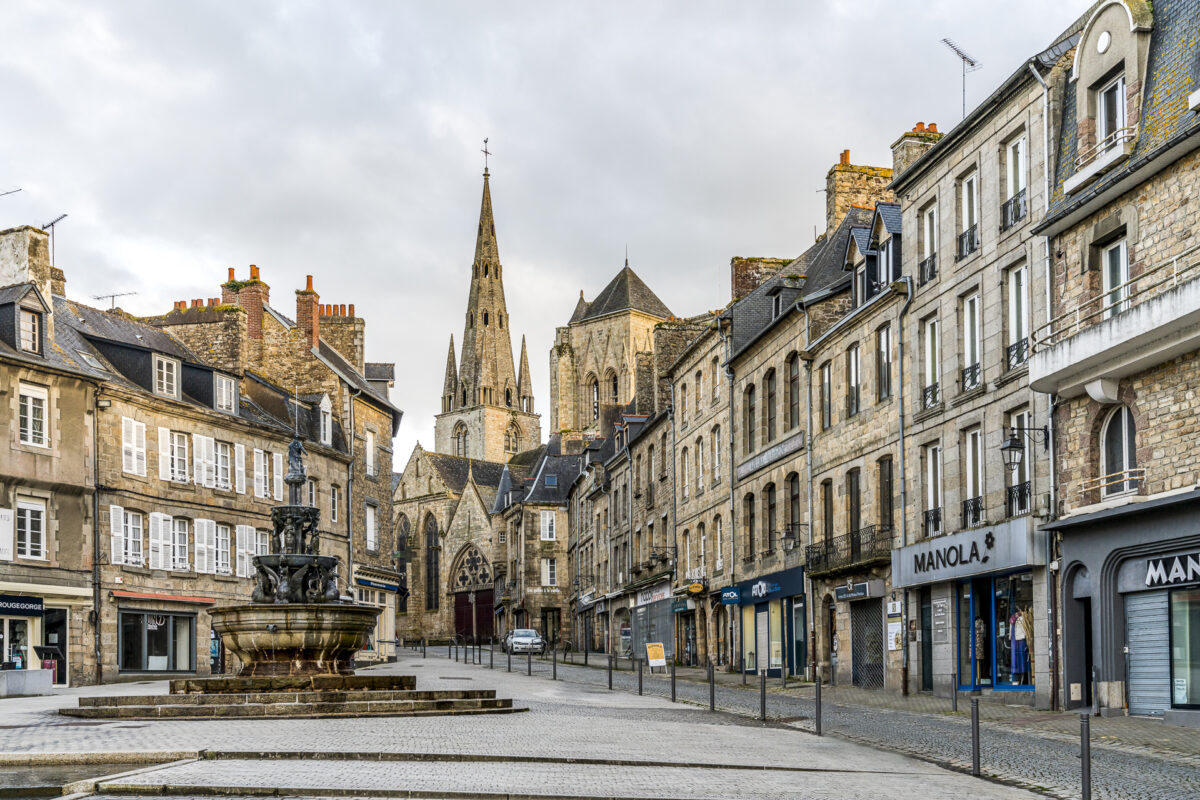
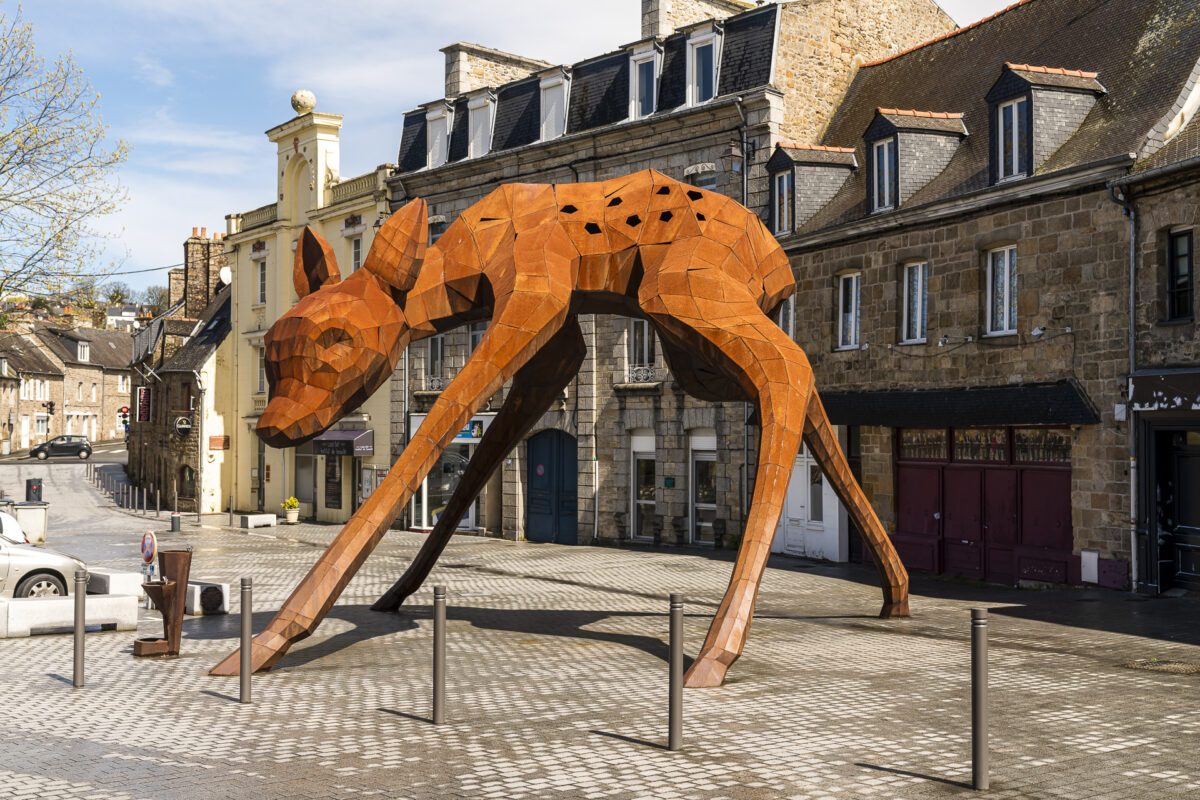
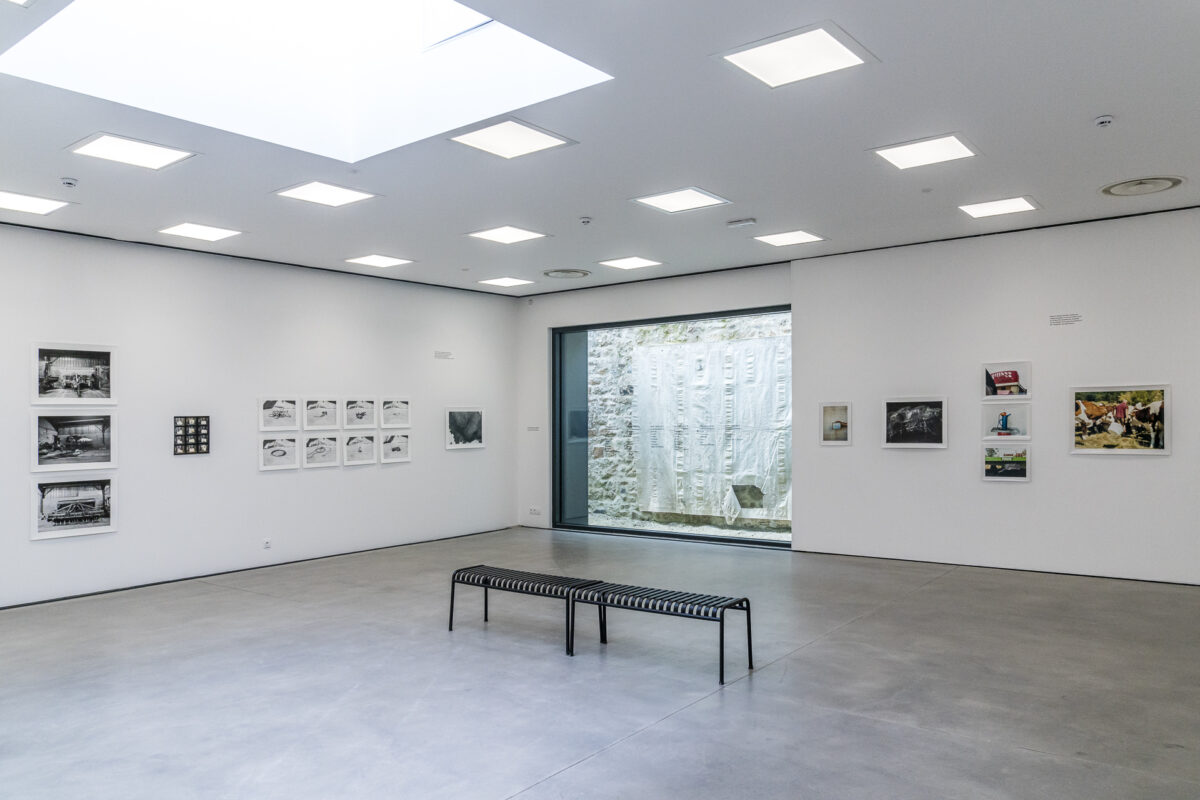
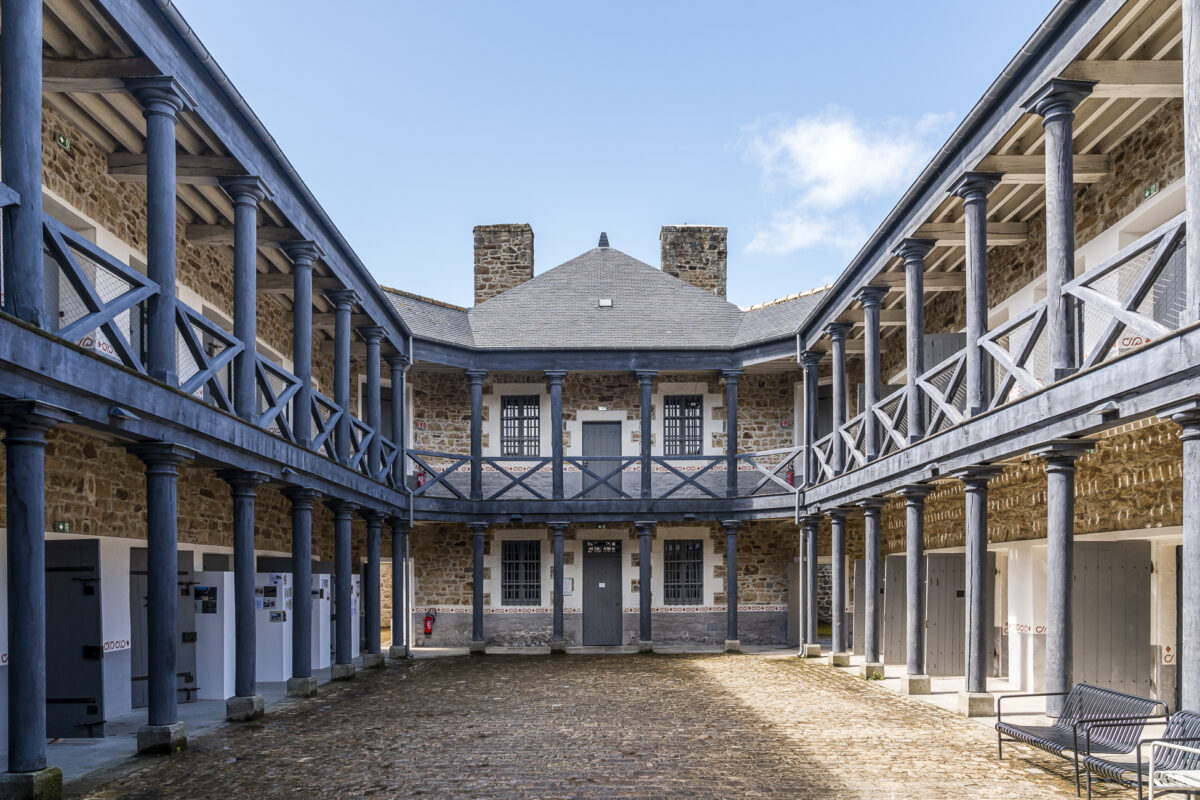
Our hotel tip for Guingamp
The boutique hotel La Demeure is a particularly stylish place to spend the night. The hotel is housed in an 18th-century city palace in a central location in the city centre. The rooms are comfortably furnished and offer plenty of space. Perfect for elevating your legs for a few hours after an active day.
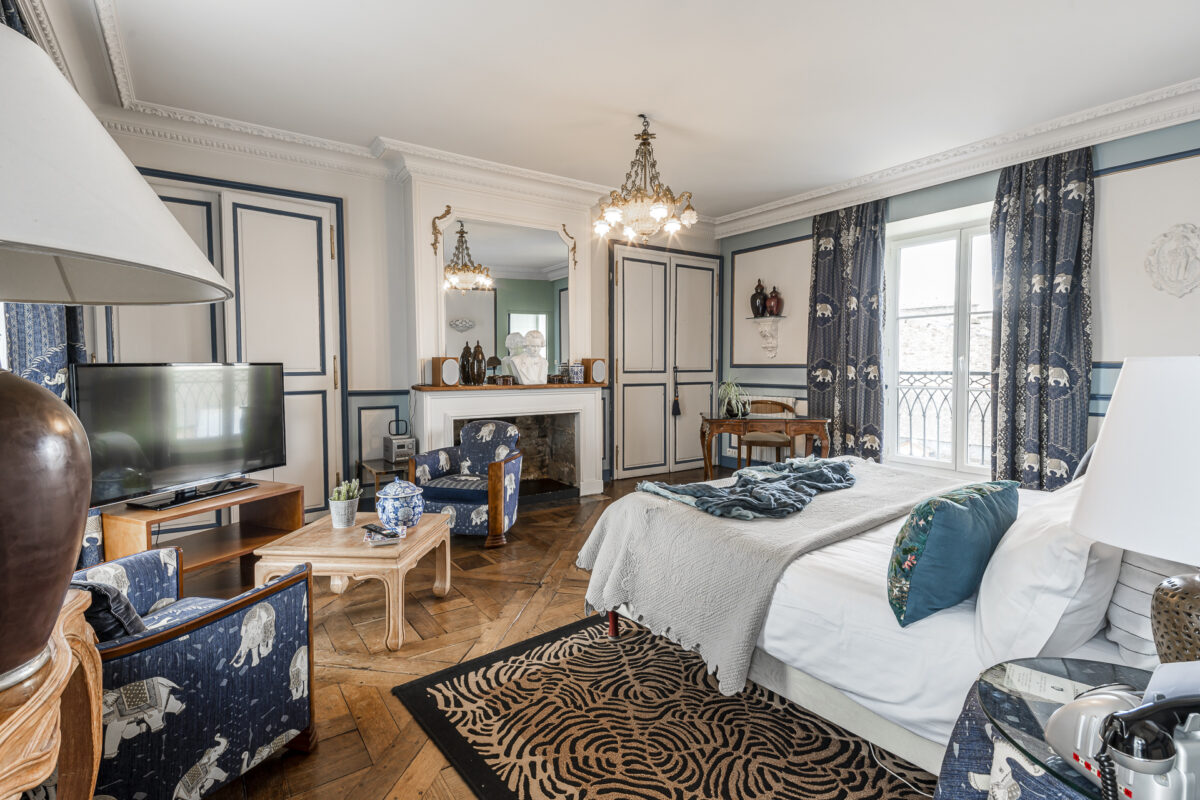
Our restaurant recommendation in Guingamp
For Guingamp we have two hot restaurant tips for you. On the one hand, we recommend that you reserve a table at the Crêperie Saint-Yves. Traditionally prepared galette bretonne is served here.
My tip: First order a hearty version (e.g. filled with cheese and mushrooms) and round off the dinner with a sweet galette (e.g. with salted caramel).
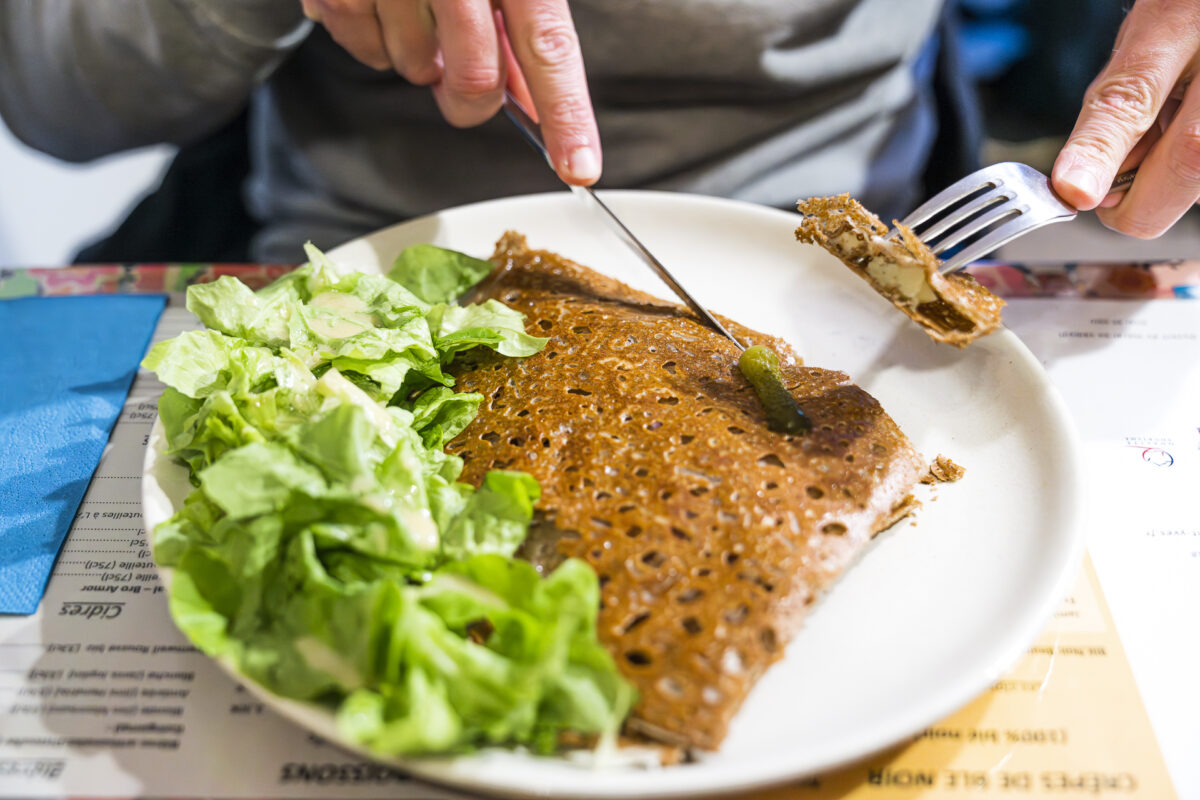
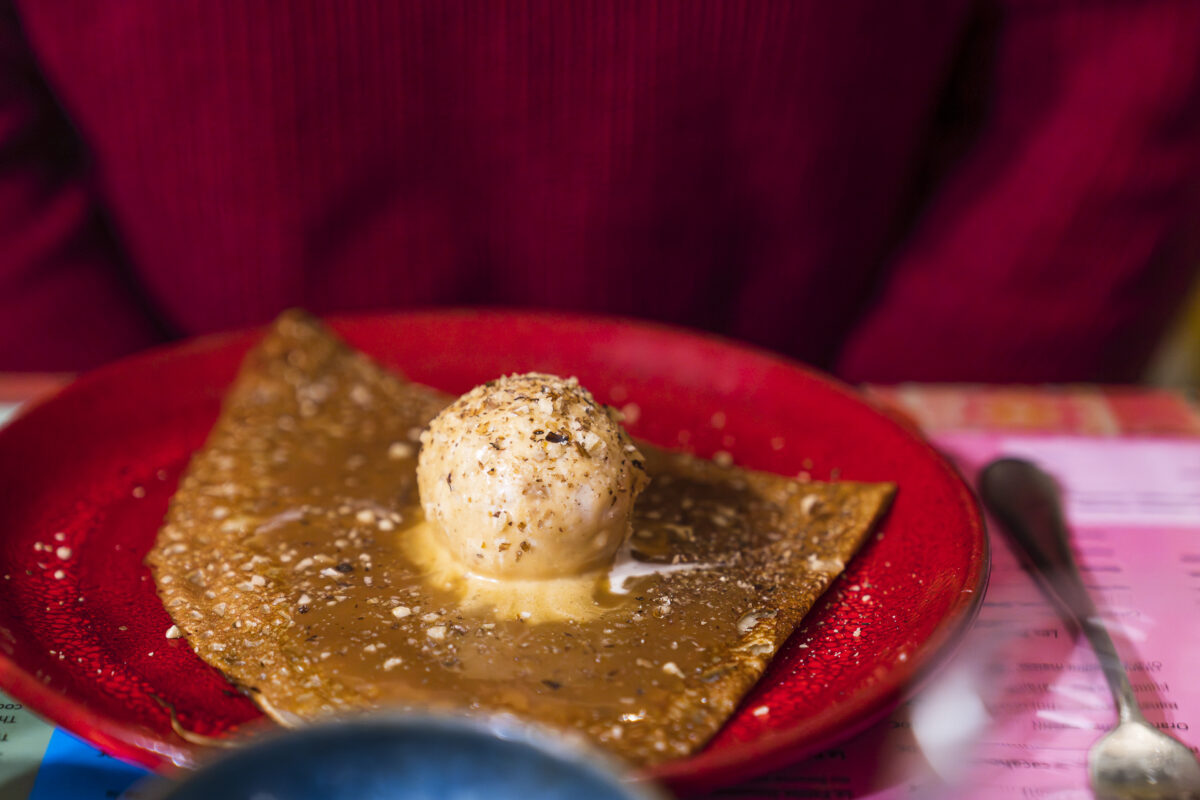
An uncomplicated, quick lunch in a casual ambience is available at the Sidonie et Compagnie restaurant directly opposite the Hotel La Demeure (the two establishments belong together).
7. The Valley of the Paper Mills
Next, we head for the bay of Morlaix. The drive there takes us past the “vallée des papeteries”. This was once one of the largest industrial workplaces in the region. The ruins of the former factories are now accessible free of charge. Extensive walking paths lead across the plant and information boards provide exciting background information about the development and work in the former paper mills.
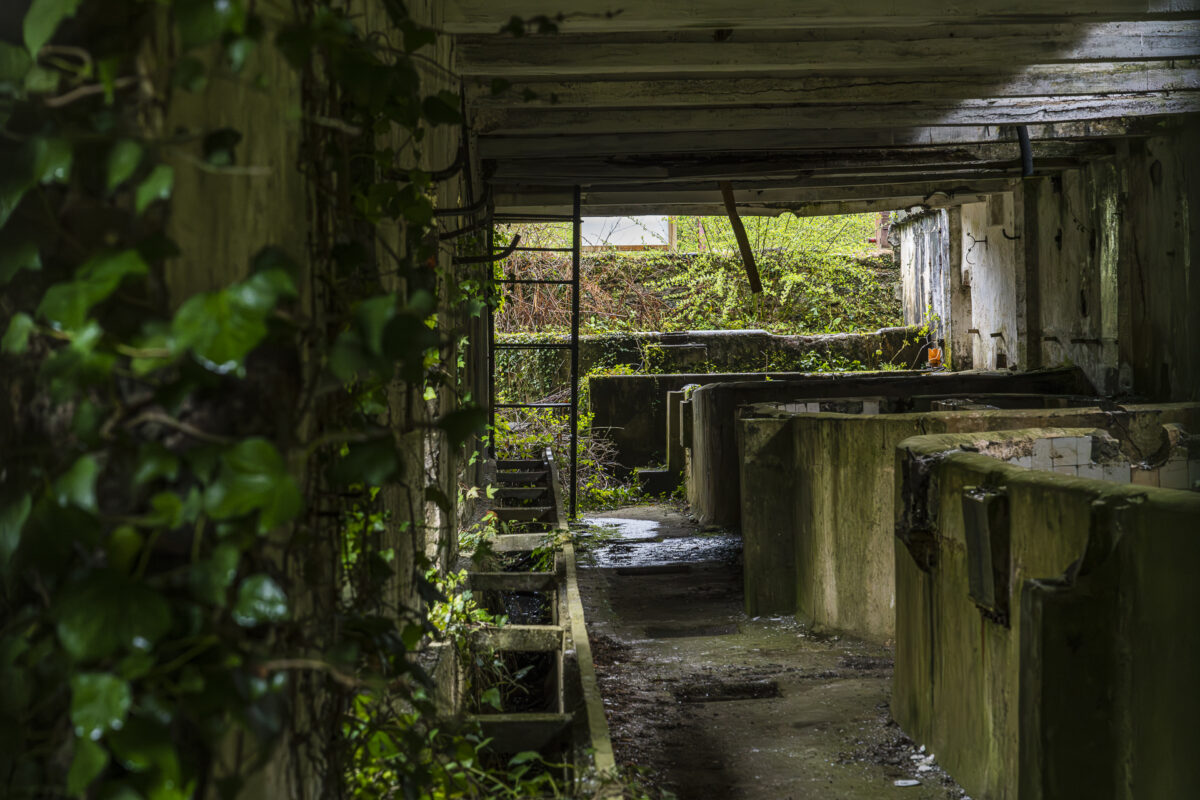
If it hadn’t been raining heavily at the time of our visit here, we would have followed the signposted hiking trail a few kilometers downstream. Instead, we take a short detour to the tranquil Loc-Envel. Worth seeing here is the Gothic-style church of Saint-Envel de Loc-Envel, which stands on a calvary above the small cluster of stone houses.
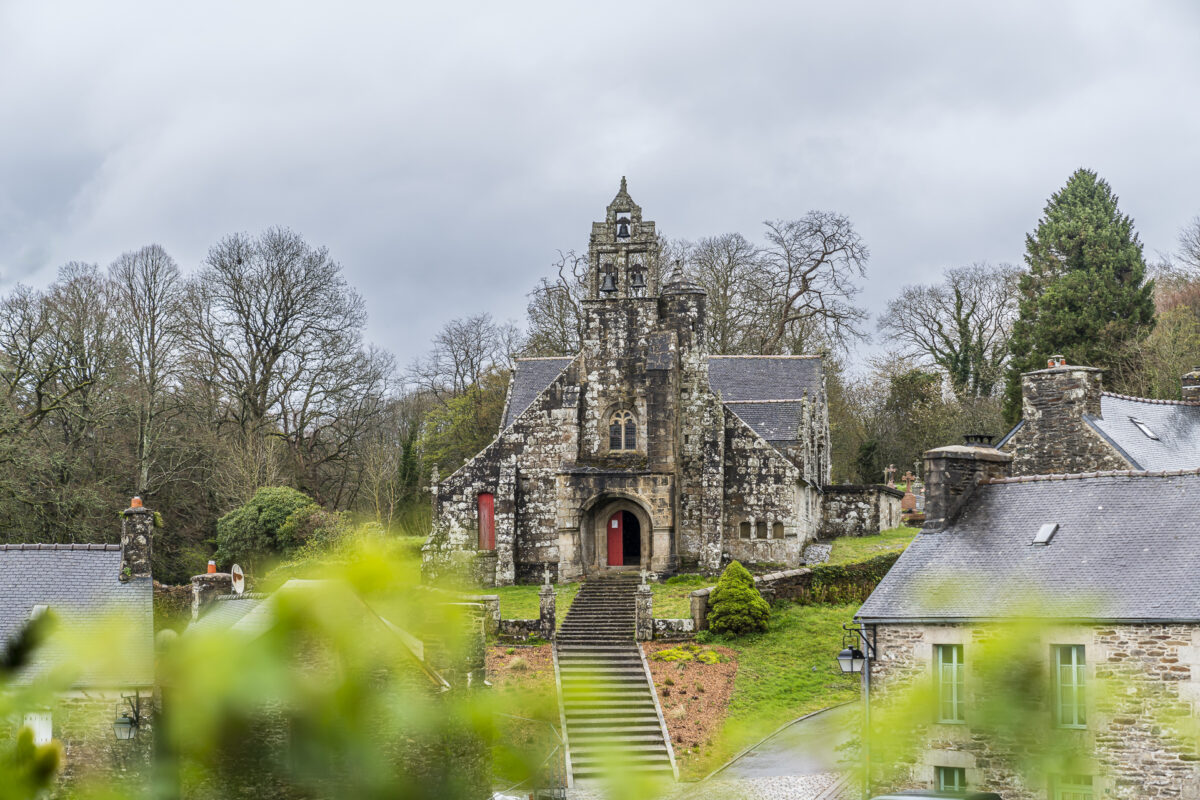
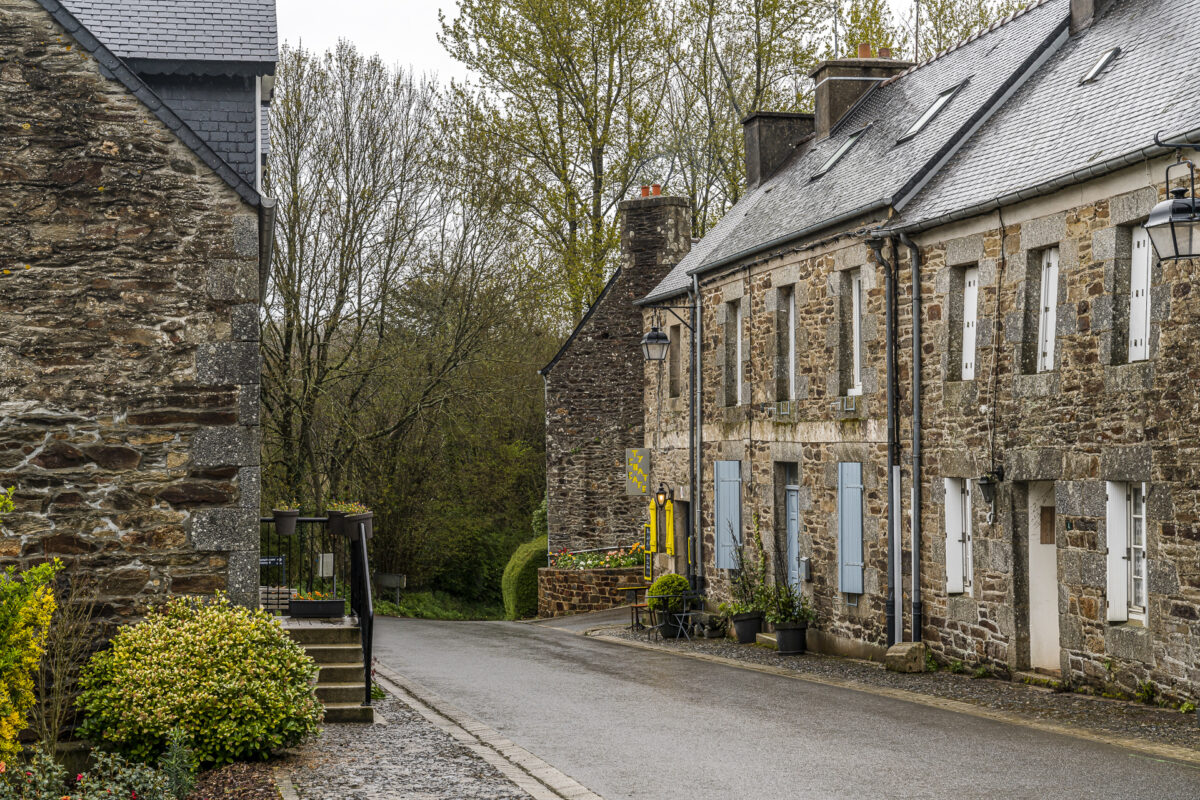
8. The Pink Granite Coast
Just in time for lunch, we arrive at the picturesque bay of Saint Guirec. We are now on the famous Pink Granite Coast – one of the most impressive sights of the northwest coast of Brittany. Before following in the footsteps of the customs officer’s path (GR 34) on a hike to the Phare de Ploumanac’h, we will stop at the restaurant Le Coste Mor, located directly on the beach. It is worth reserving one of the tables at the window front.
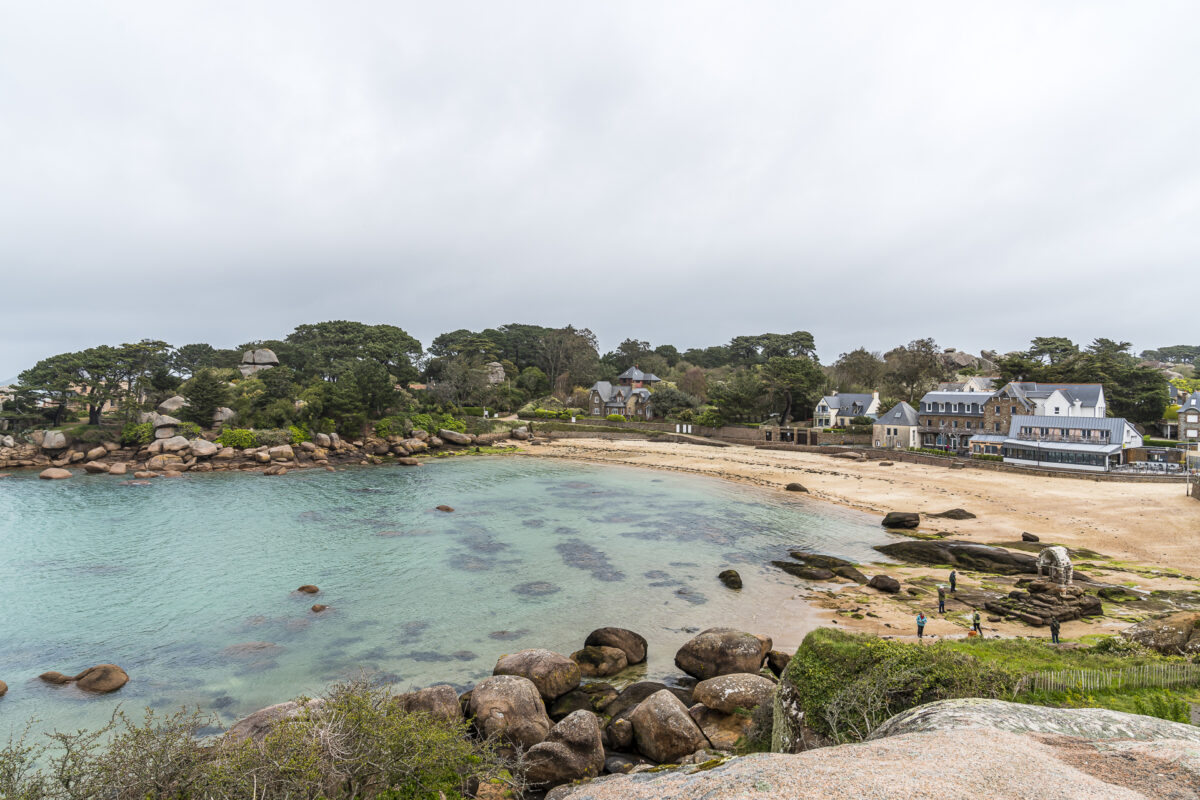
Afterwards we walk along the well-developed coastal path following the Pink Granite Coast to the beach of Trestraou, about 4.5 kilometres away, and back again. For the outward and return journey, you should plan around two to three hours. I have tracked the route with Komoot and link you to the completed route below.
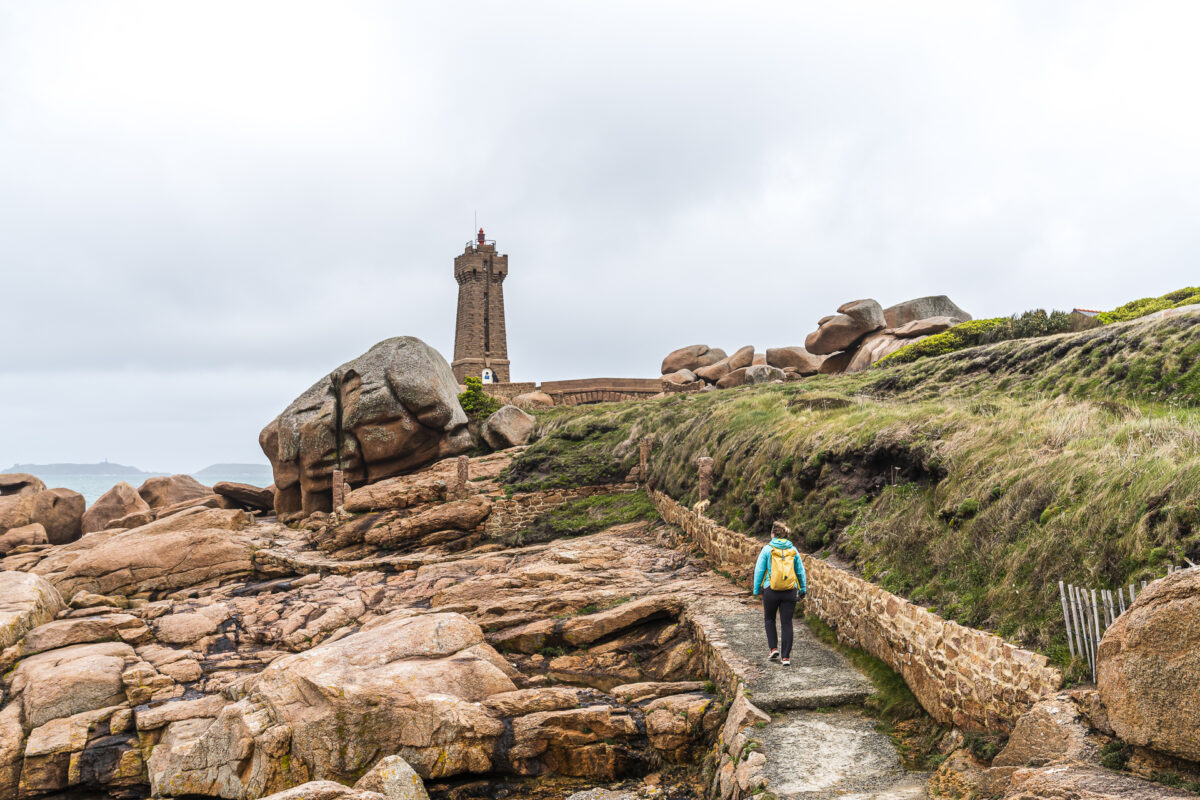
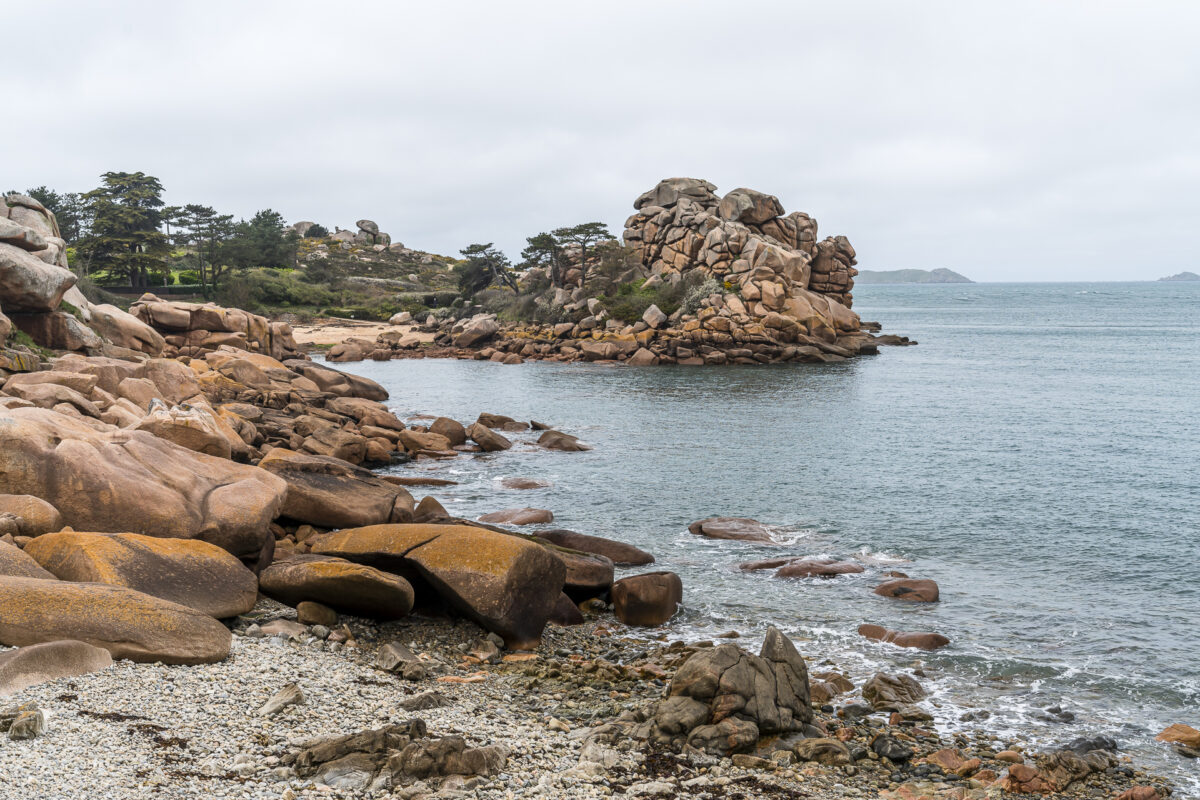
9. The picture-perfect seaside resort of Locquirec
At the end of the day, the multifaceted northwest coast amazes us once again. After the imposing cliffs near Paimpol and the Pink Granite Coast, which we have just visited, we see a picture-book beach in front of us in the evening light shortly before our destination for the day, Locquirec. We can’t help but say “wow” at the sight of the beach of Locquirec. They felt exactly the same way, Gerhard & Laurent confirm our first impression later at dinner. The two have acquired a historic property in Locquirec and renovated it with the aim of opening a guest house. In the meantime, they are members of Charme Bretagne – an association of selected Maison d’Hôtes and holiday homes.
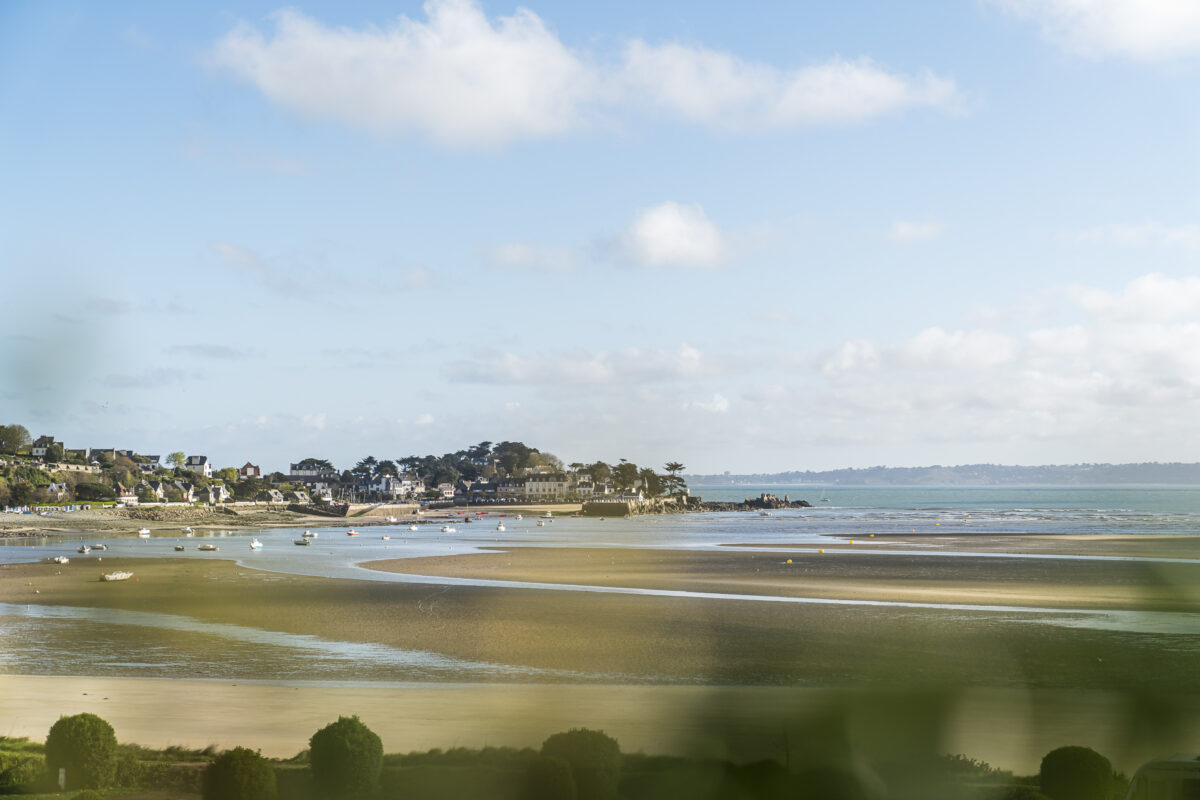
A highlight of our overnight stay at L’Ardoisière was the dinner together in a relaxed bistro style with our hosts. But in my opinion, it’s worth checking in at L’Ardoisière for more than just one night. Locquirec is a great base from which to explore the area around the Bay of Morlaix and delights water sports enthusiasts all year round (especially popular: surfing and kitesurfing – including casual beach bars such as Le Millin).
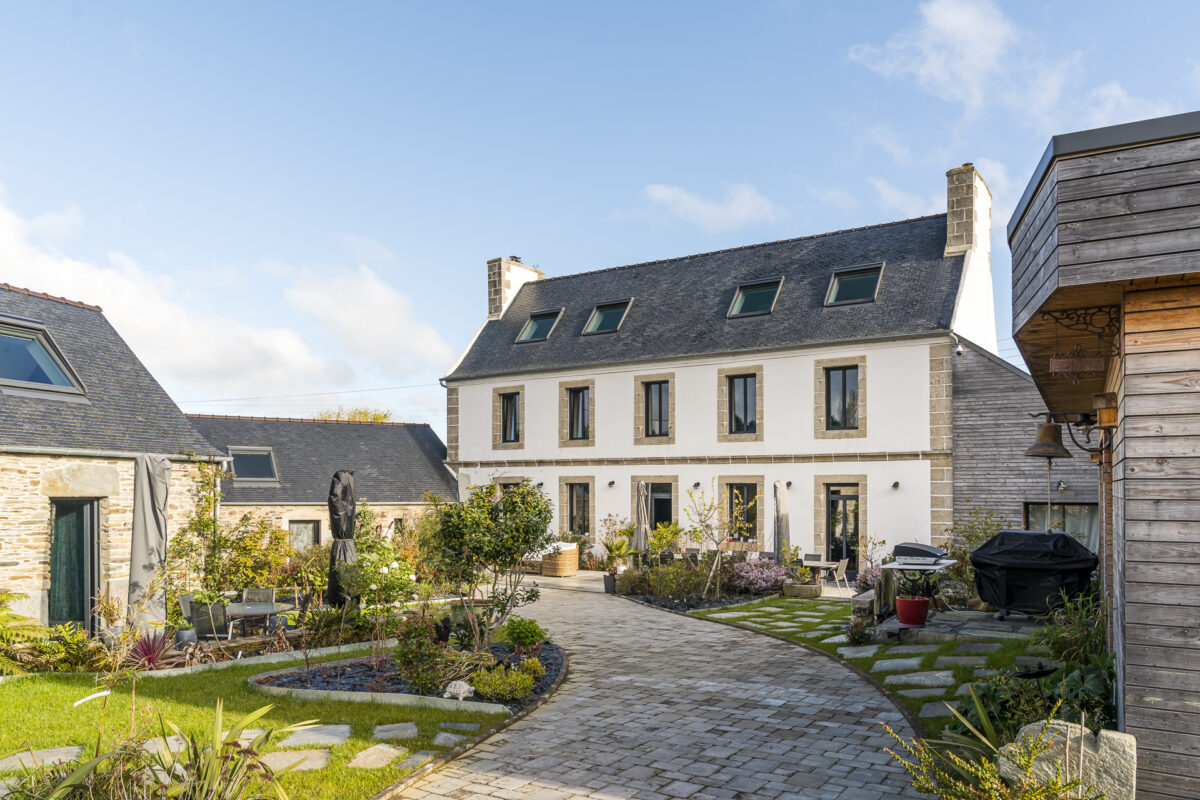
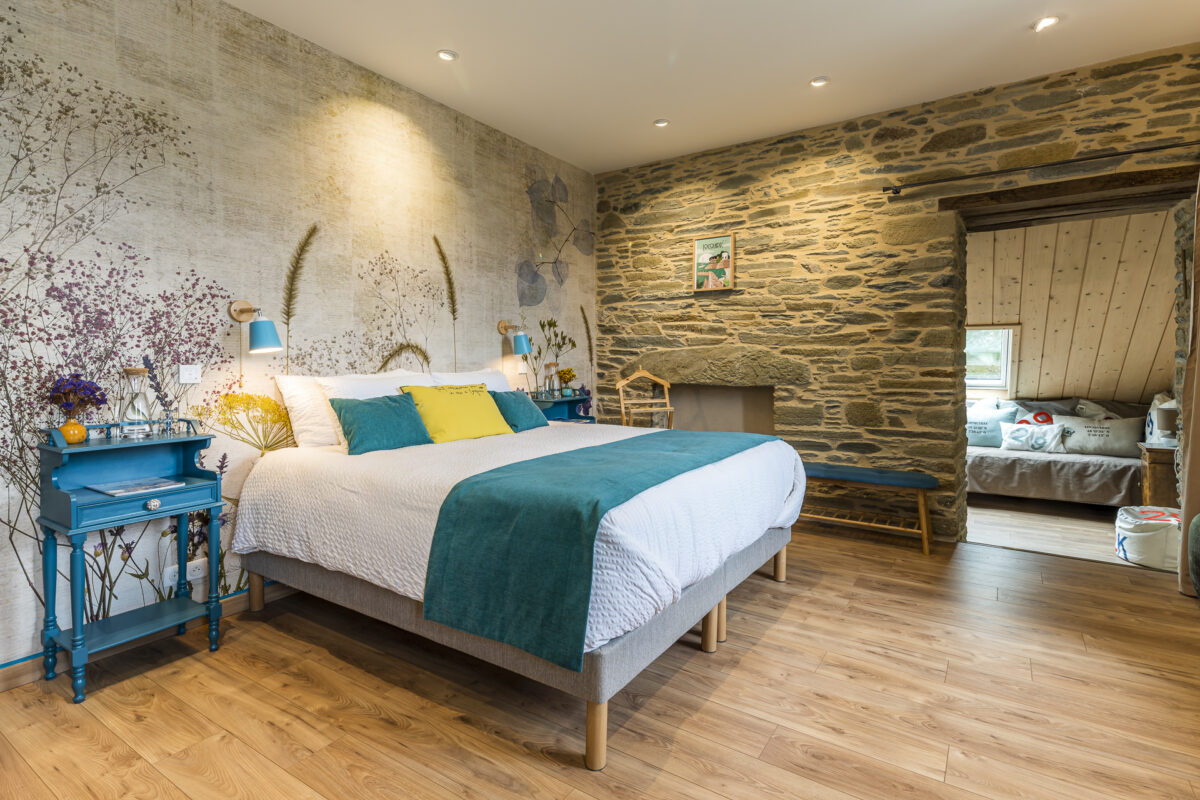
10. Pointe de Primel
The next morning we have an appointment with Cédrine de Flore Loened at the headland Pointe de Primel. Here, at the entrance to the Bay of Morlaix, you can discover exciting historical fragments from different eras with a local guide. On a two-hour walk around the Pointe de Primel, Cédrine draws our attention to traces of settlement from the Neolithic Age and shows us the leading plants of the coastal flora.
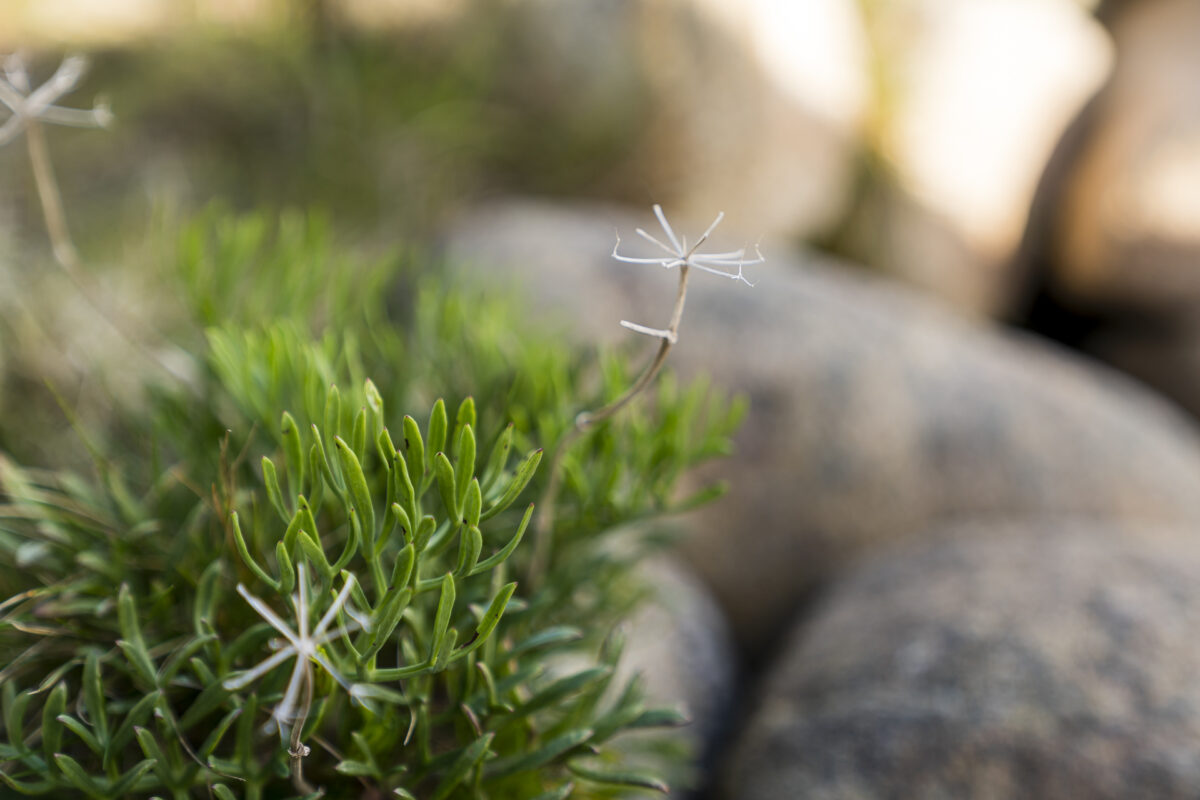
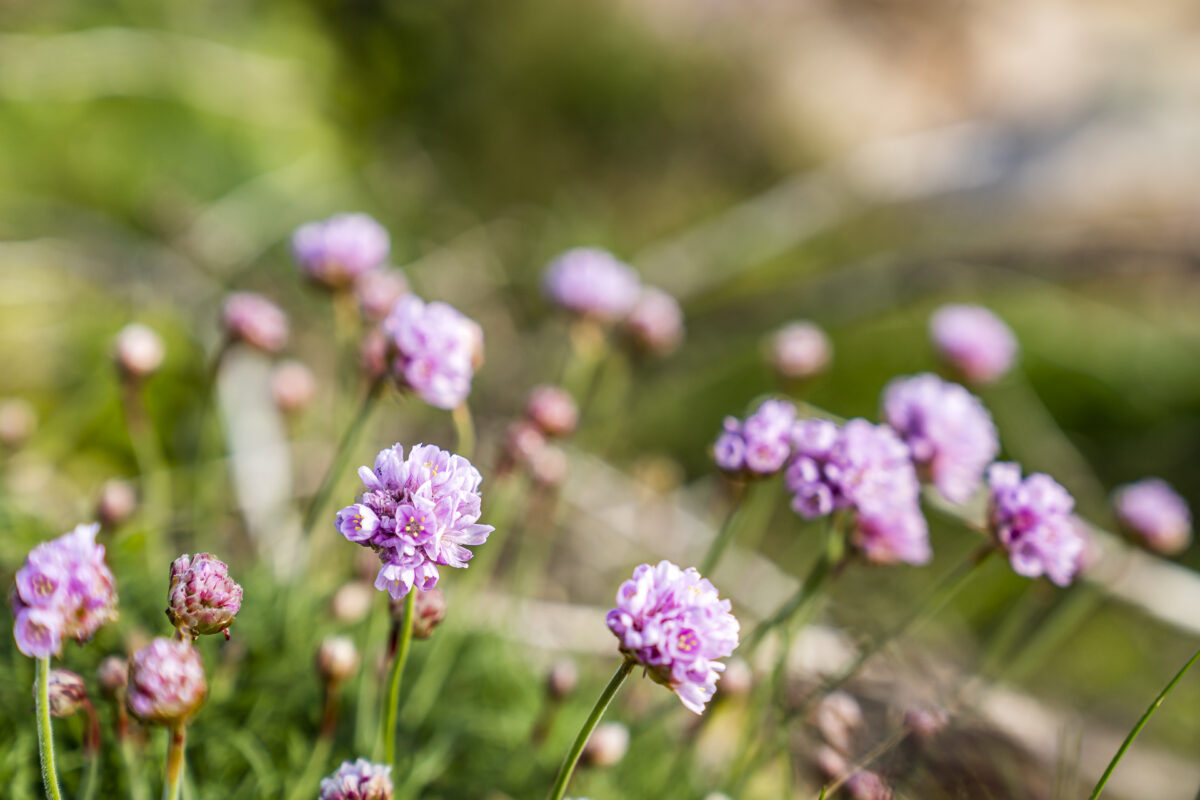
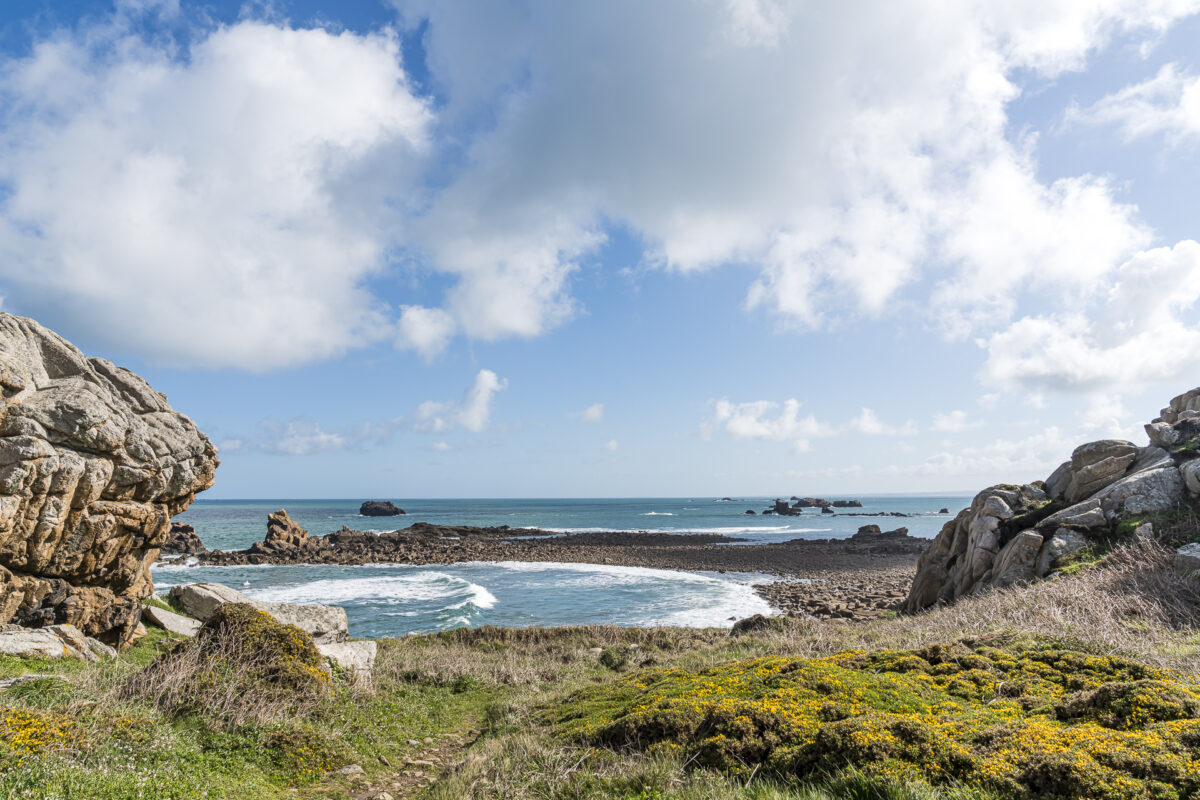
Just a few kilometres from the Pointe de Primel is the Cairn Barnenez, one of the largest megalithic mausoleums in Europe. Since Cédrine’s explanations have aroused our curiosity, we pay a visit to the Cairn Barnenez after our walk. But only after we have strengthened ourselves in the Primel Café directly on the beach with freshly caught fish. The small restaurant is a well-kept tip. In mid-April, you would have spontaneously gotten a place – if you want to be on the safe side, it’s better to reserve a table in advance by phone.
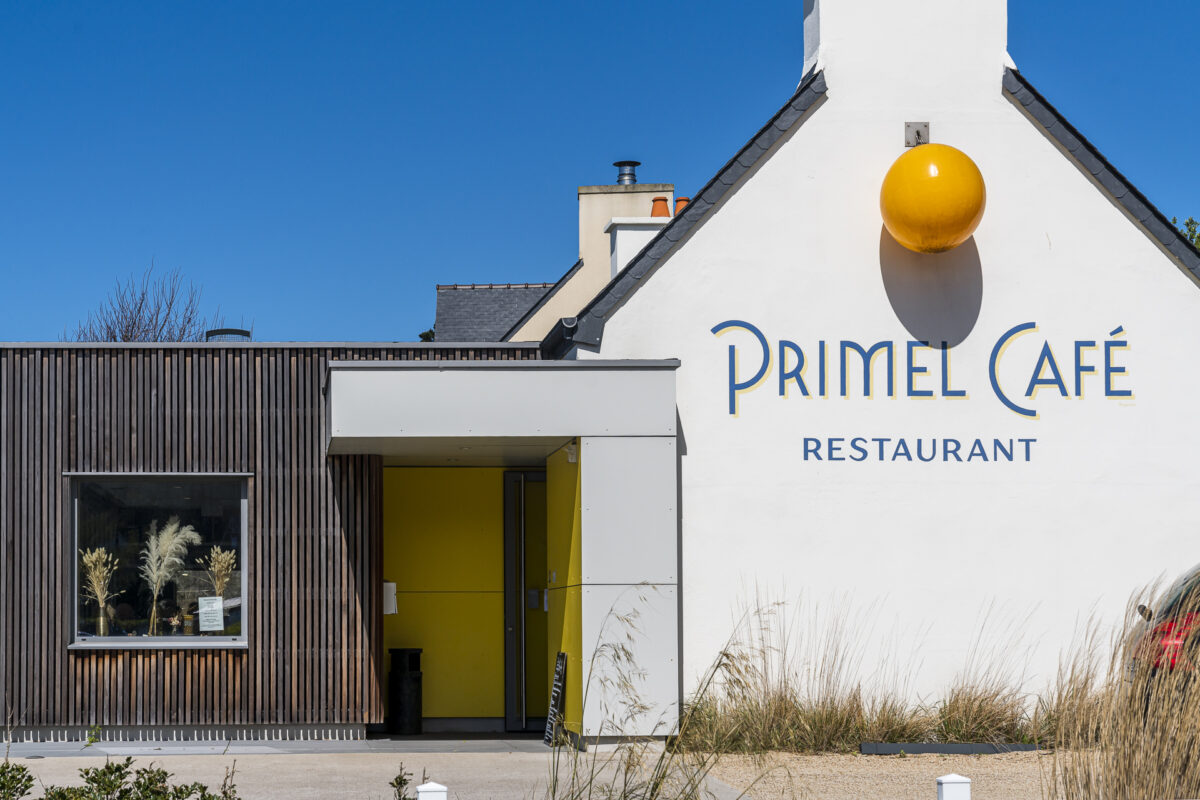
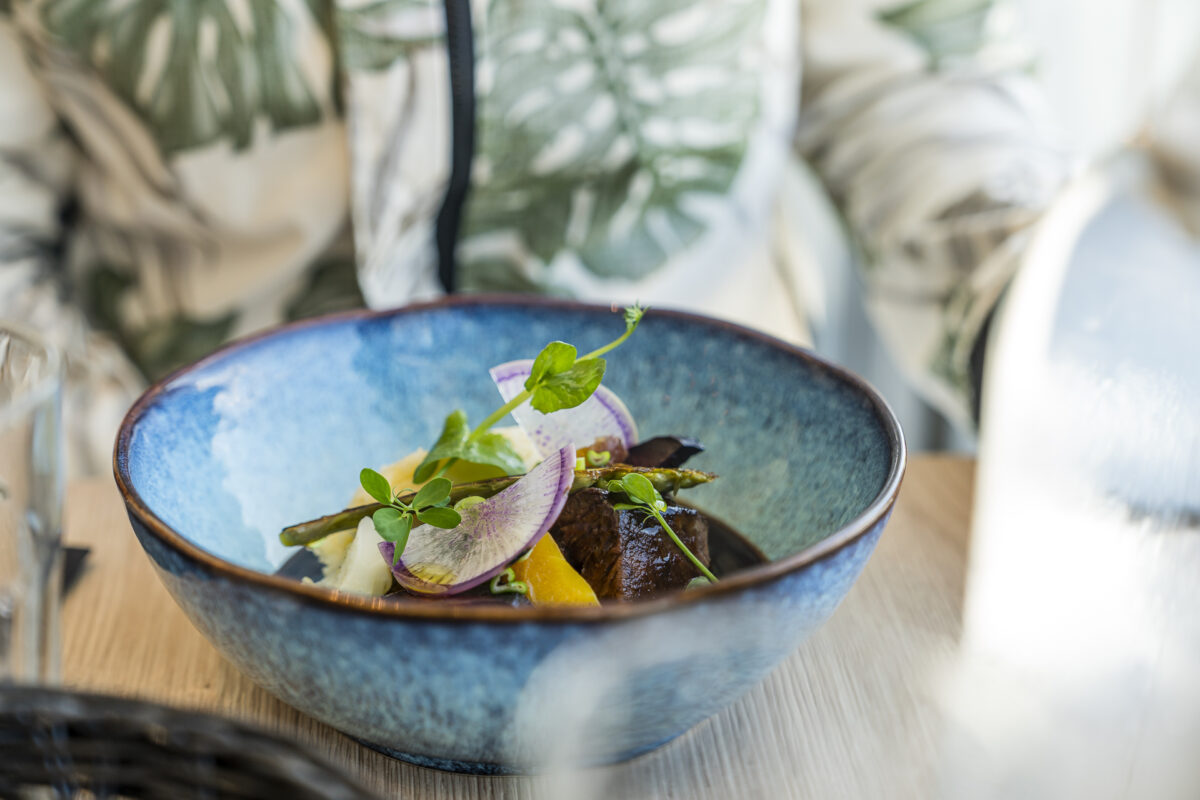
11. Street Art and Railway Viaduct in Morlaix
In the late afternoon we arrive in Morlaix. For me, it was one of the most surprising places we visited in these seven days – and in a positive sense. Even from a distance, the railway viaduct spanning the old town catches the eye. This was achieved in 1861 for the completion of the Paris-Brest line and has been one of the city’s landmarks ever since. The lower row of arches can be walked on and offers a great view over the city centre.
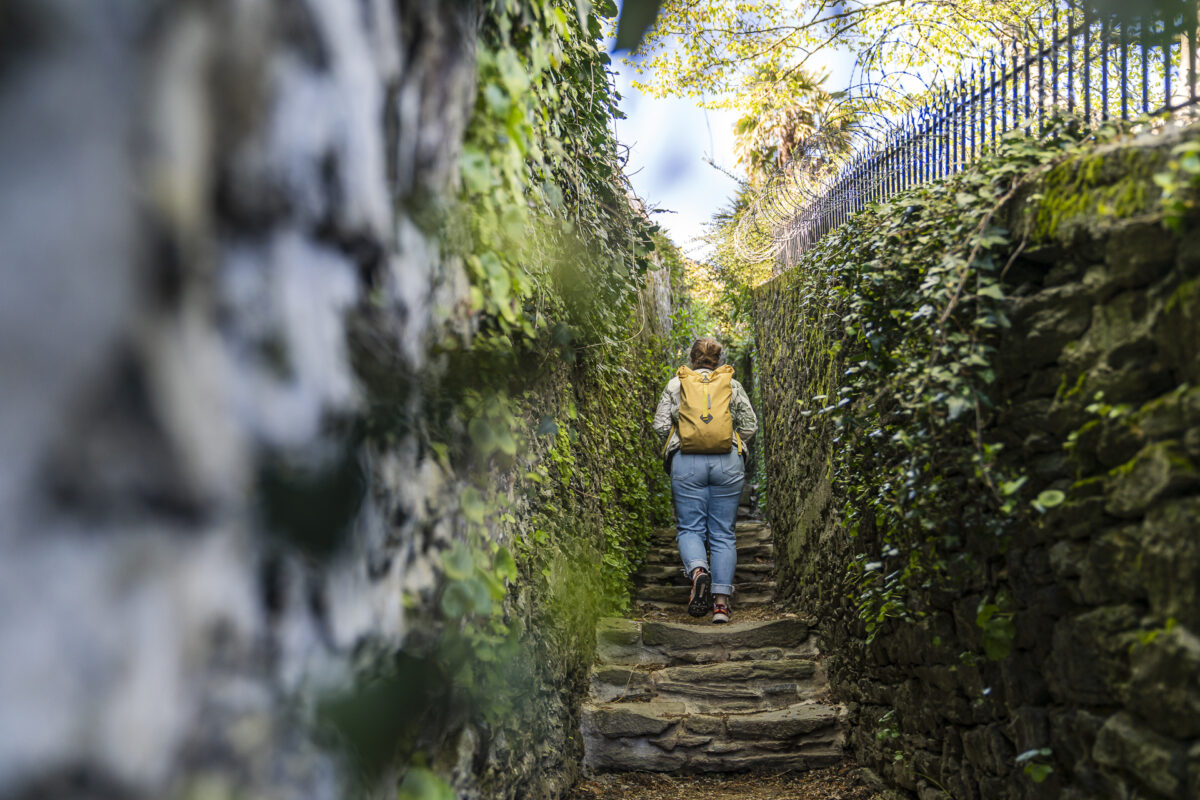
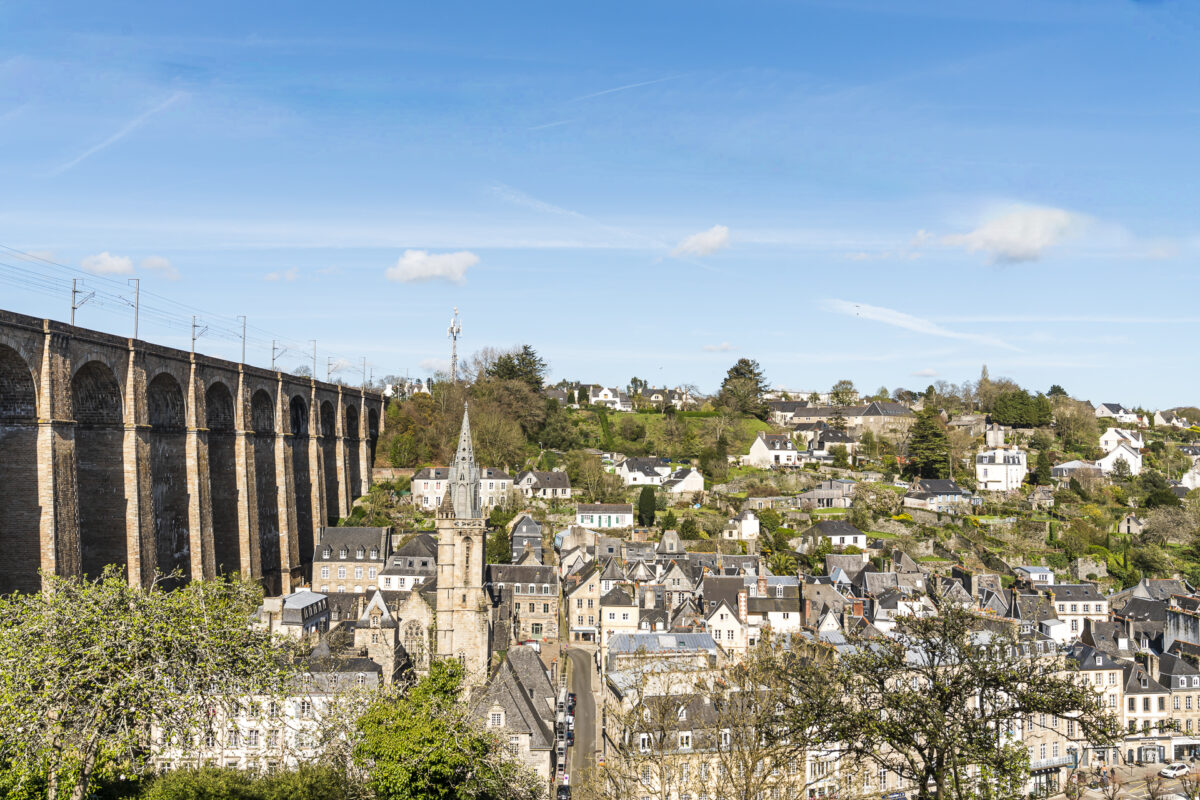
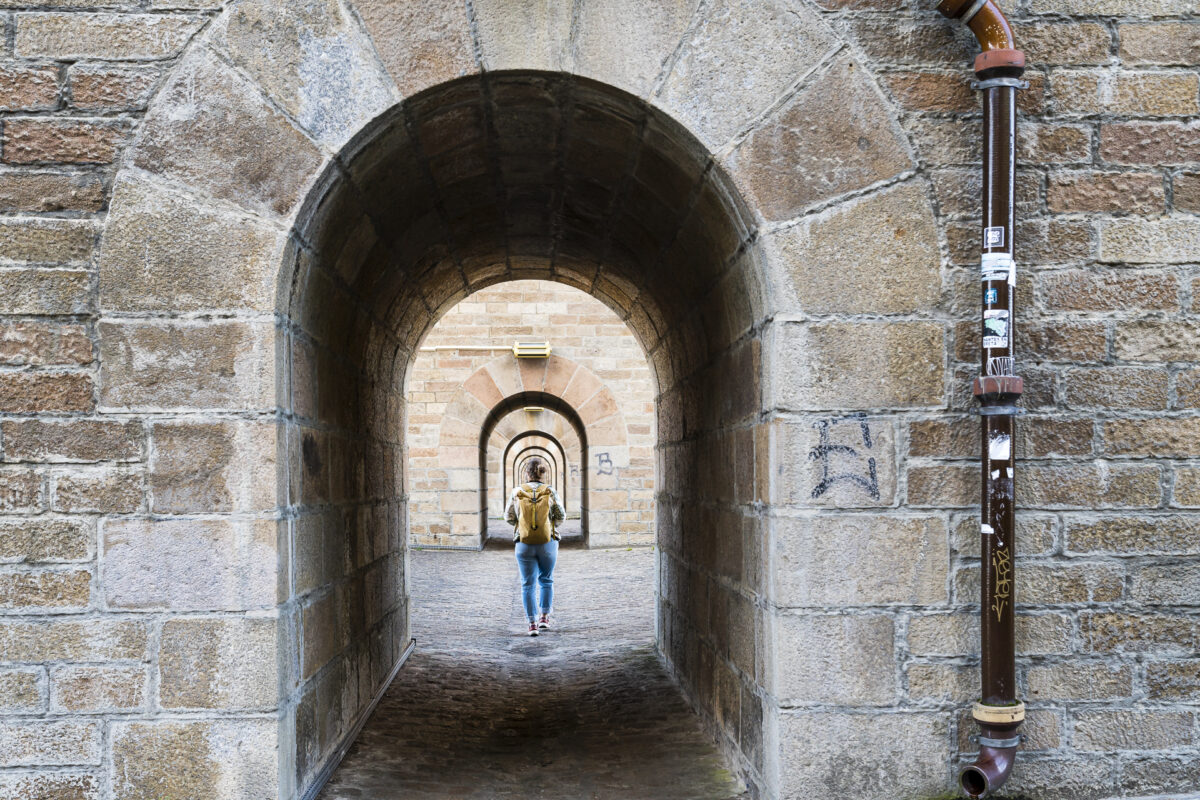
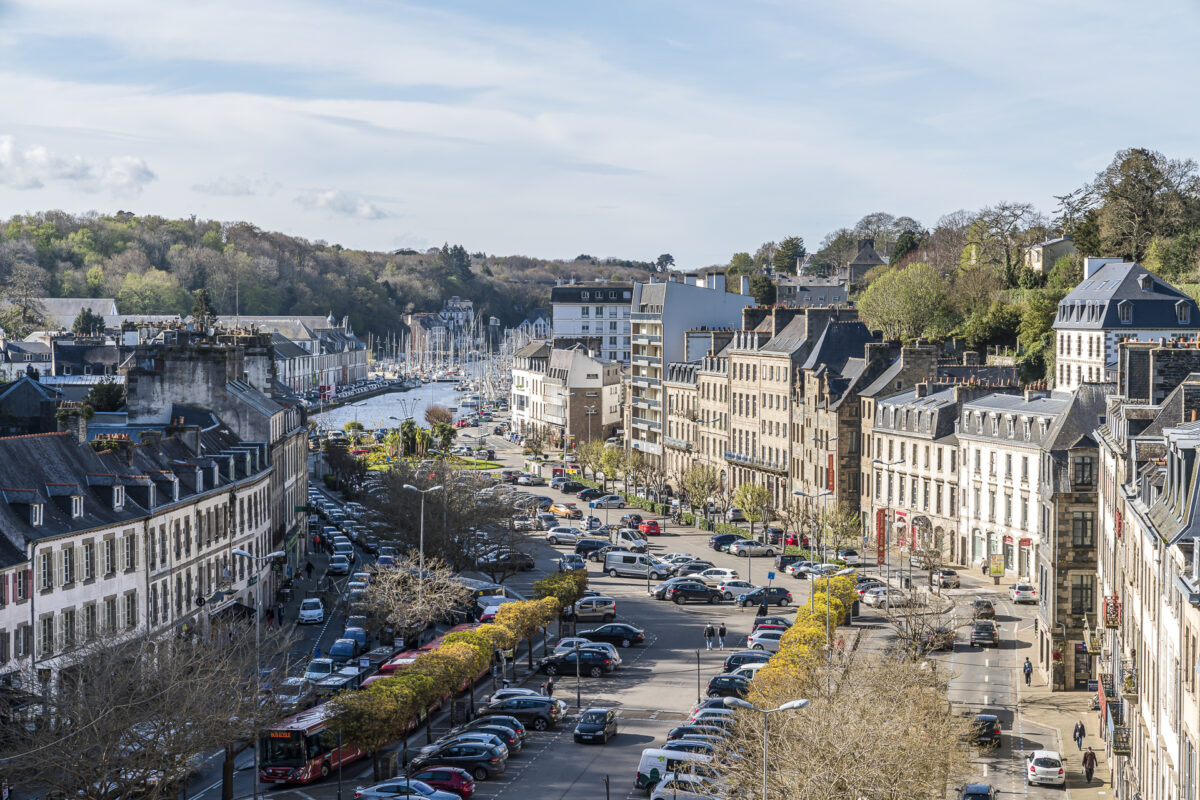
Another architectural feature of Morlaix are the so-called “Maisons à Pondalez” (lantern houses). One of them is located at 9 Grande Rue and is designed as a museum. It is also worth taking a look inside the house known as the Maison de la Duchesse Anne at 33 rue du Mur.
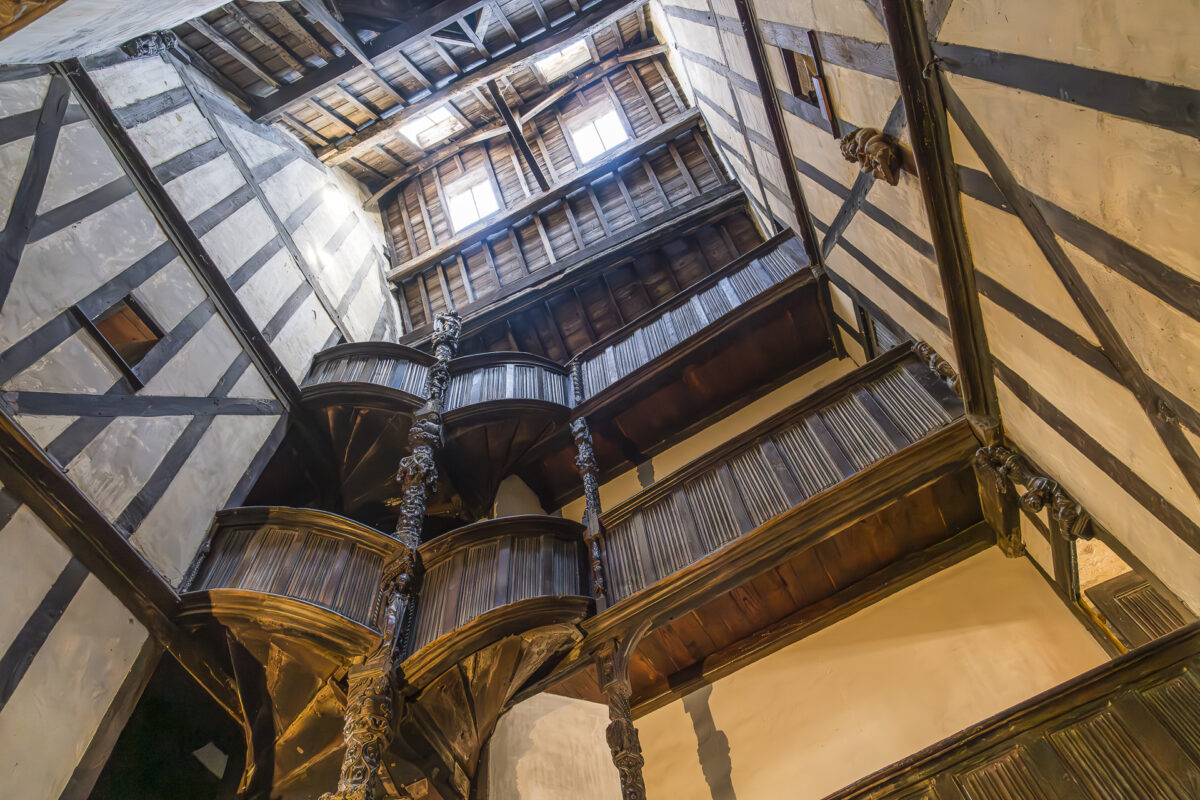
In Morlaix, more than 50 works of street art can also be seen in public spaces, which change every year (new works are added, older works are removed). You can explore individually with the help of a map (available at the tourist office) or an app. Alternatively, there are also specific street art tours.
For more information, please visit: Morlaix Arts Tours
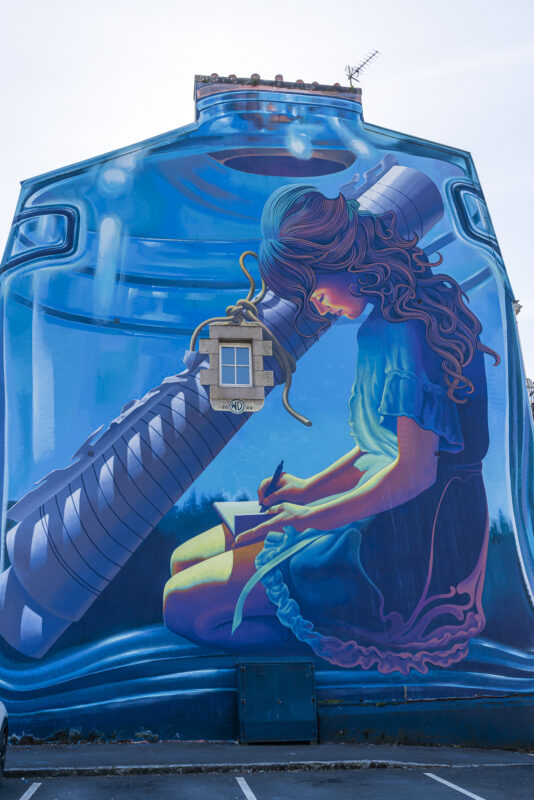
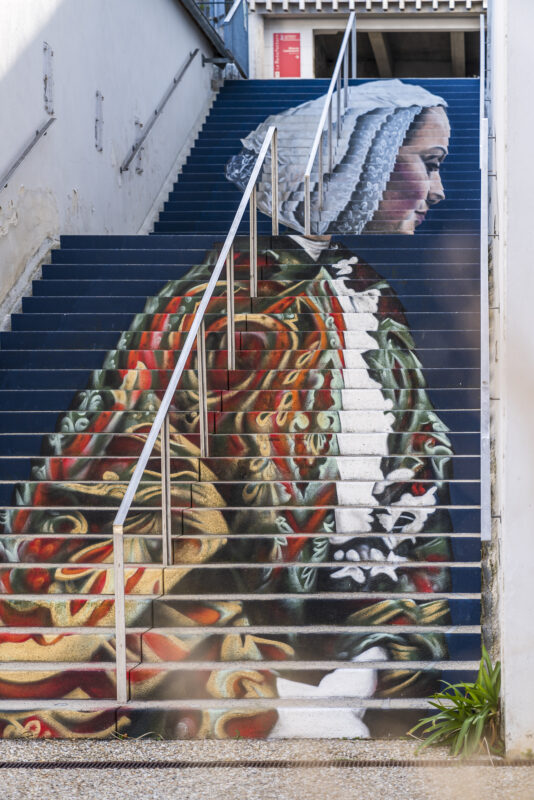
Extra tip: If you like chocolate, you should also plan a stop at the Chocolaterie Grain de Sail when visiting Morlaix. The aim of the “Grain de Sail” project is to establish a low-emission trade in coffee and chocolate (as well as other transatlantic goods) by means of sailing ship transport. An ambitious and far-sighted project, which you can find out about during a one-hour chocolate workshop including a short interactive tour.
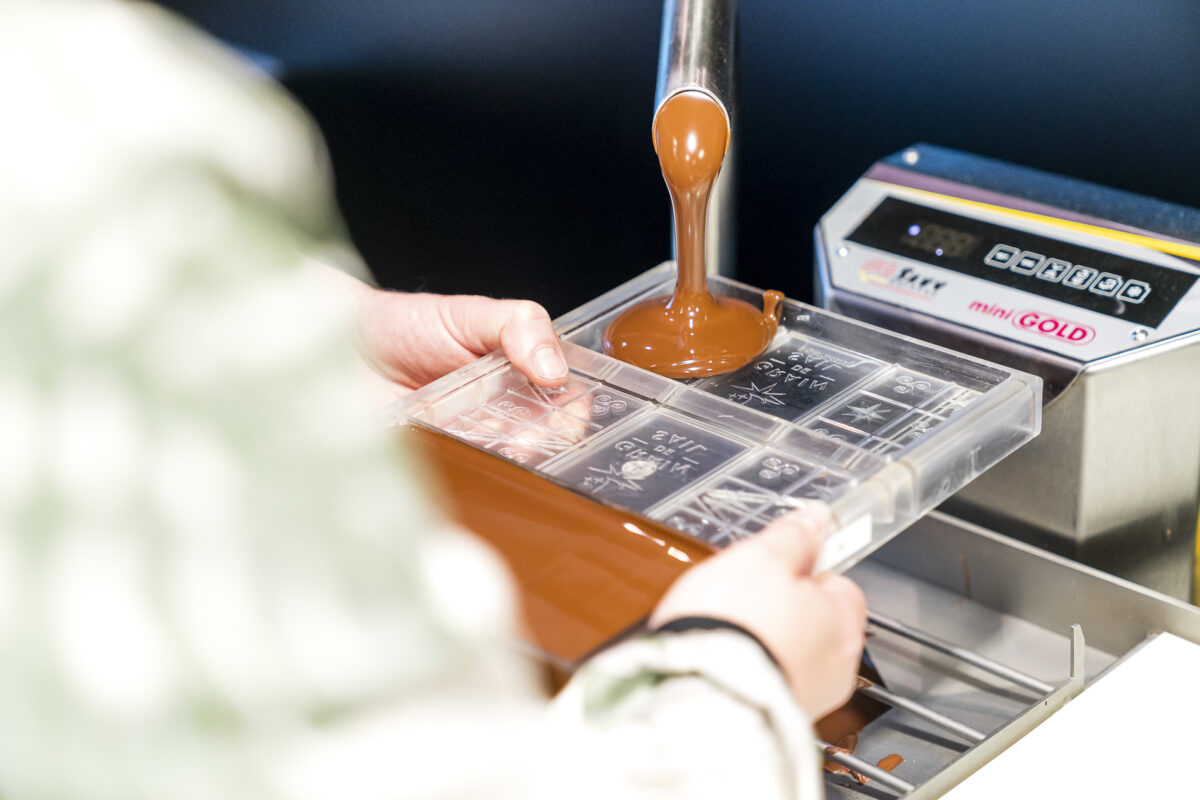
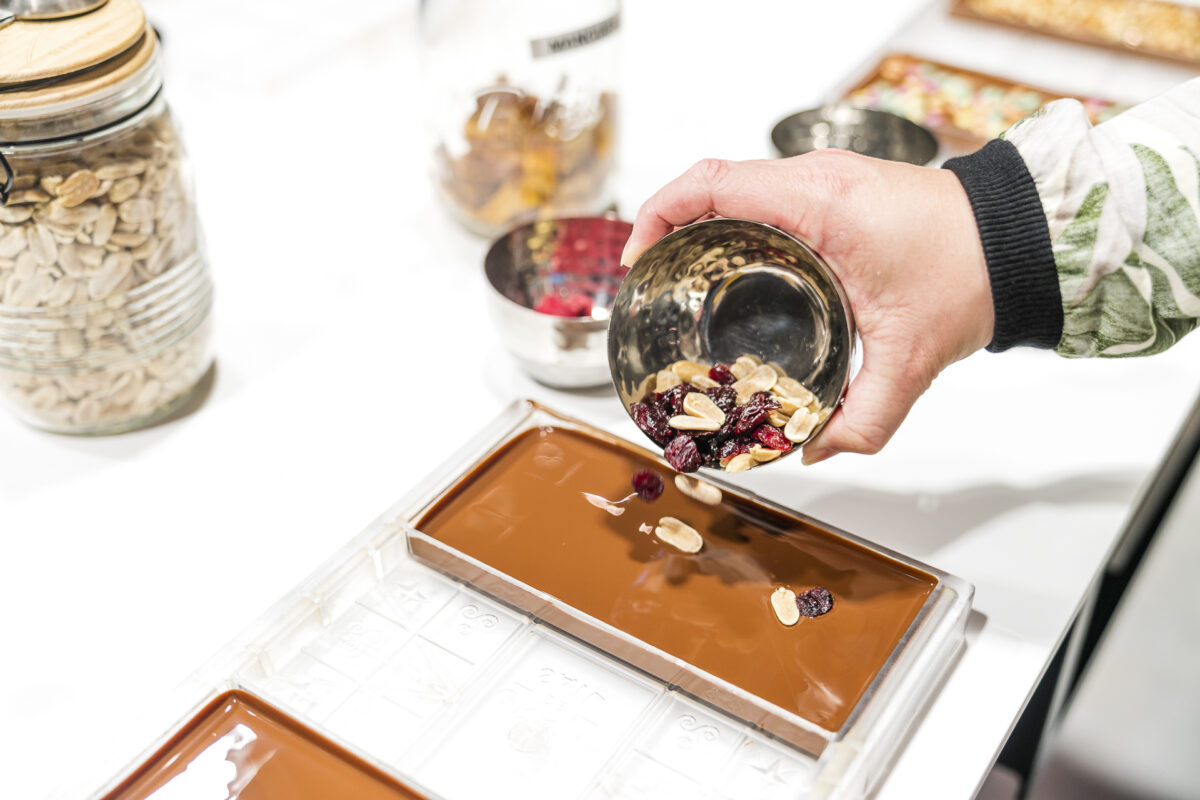
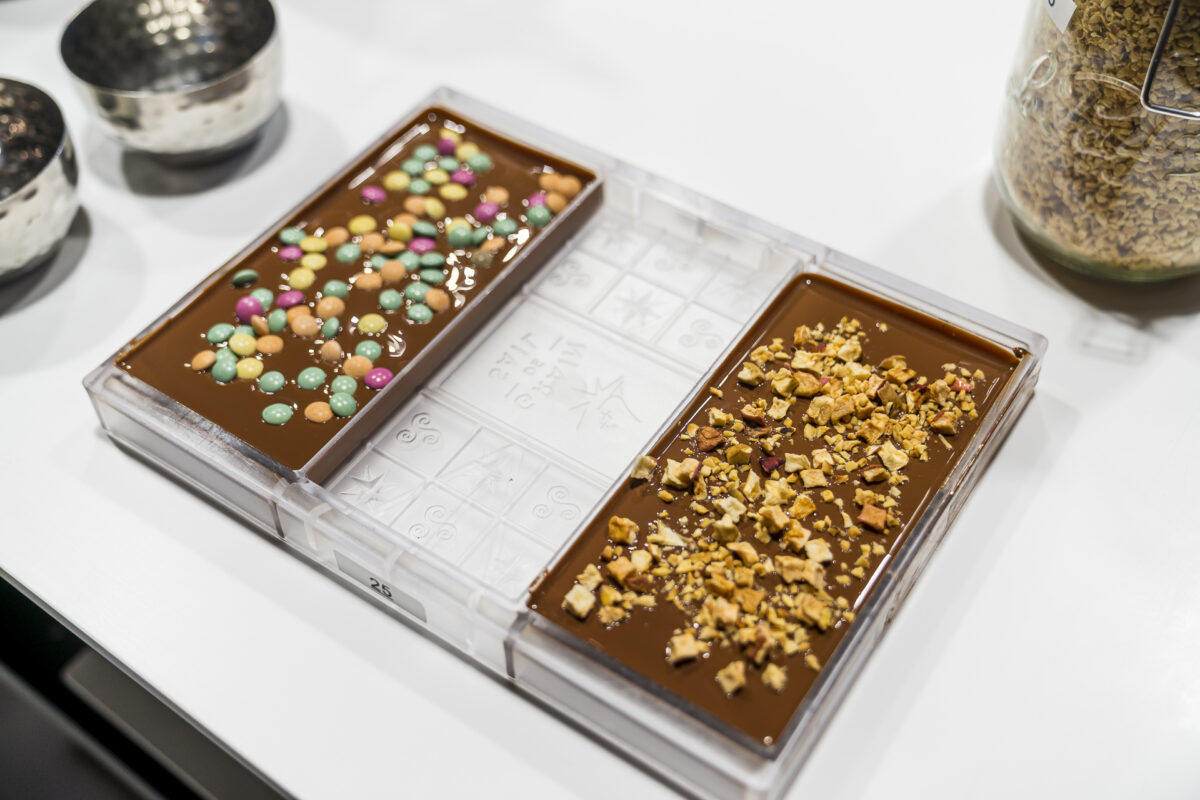
12. Geheimtipp Carantec
A 20-minute drive from Morlaix is Carantec. Surrounded by extensive sandy beaches, Carantec is a popular local recreation and holiday destination. We will spend the night in a seaside hotel typical of the region from the 30s of the last century: the Hôtel de Carantec. Since 2019, Michelin-starred Nicolas Carro has been working here as head chef.
If you check in here for one night and reserve a table in the gourmet restaurant in addition to the room, you are doing everything right in my opinion. Sea view & fine dining. All the best!
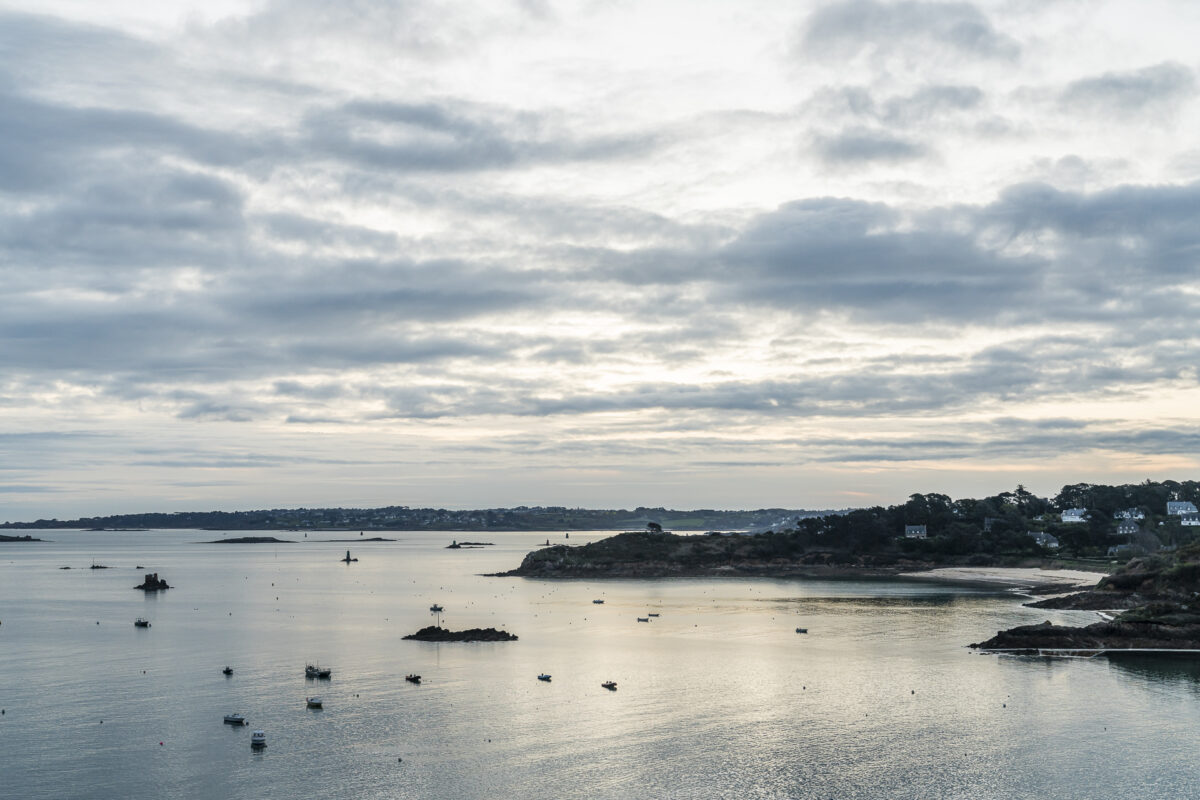
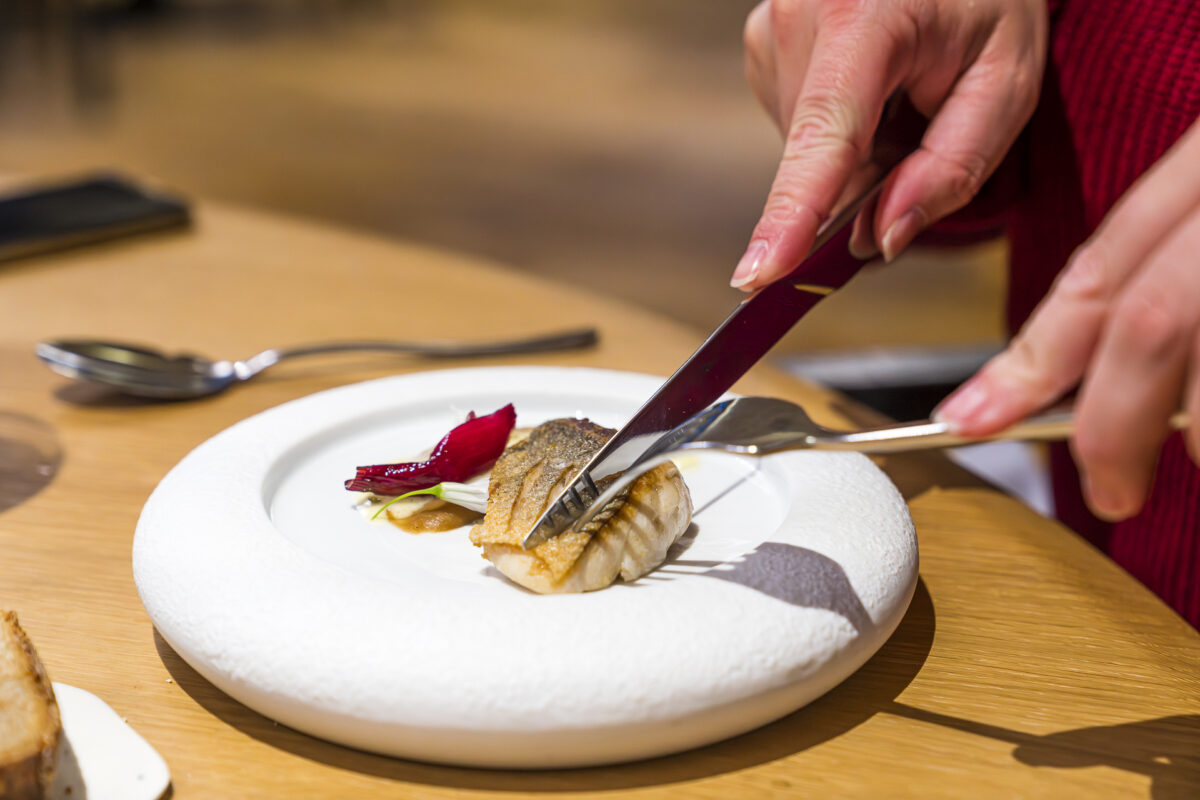
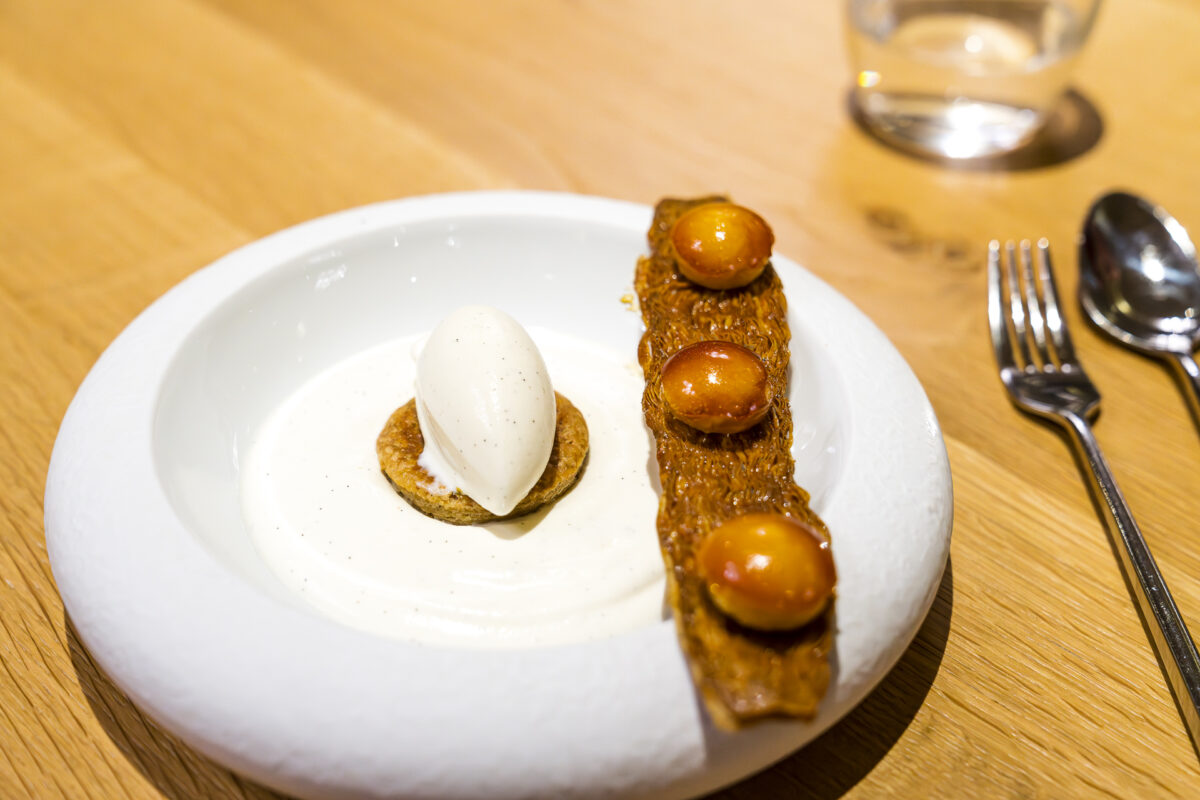
13. The underwater road to the Ile de Callot
The Hôtel de Carantec is also ideally located for exploring early the following morning. Directly in front of Carantec are the Île Callot. Depending on the tide, this can be reached via a road from the mainland. There are currently ten such tidal islands in Brittany. We parked our car in the parking lot in front of the “Petite Passe” and walked to the northernmost panoramic point (distance about 3 kilometers / time required round trip approx. 1.5 hours). Basically, you could also drive over to the island by car and park it there in the parking lot.
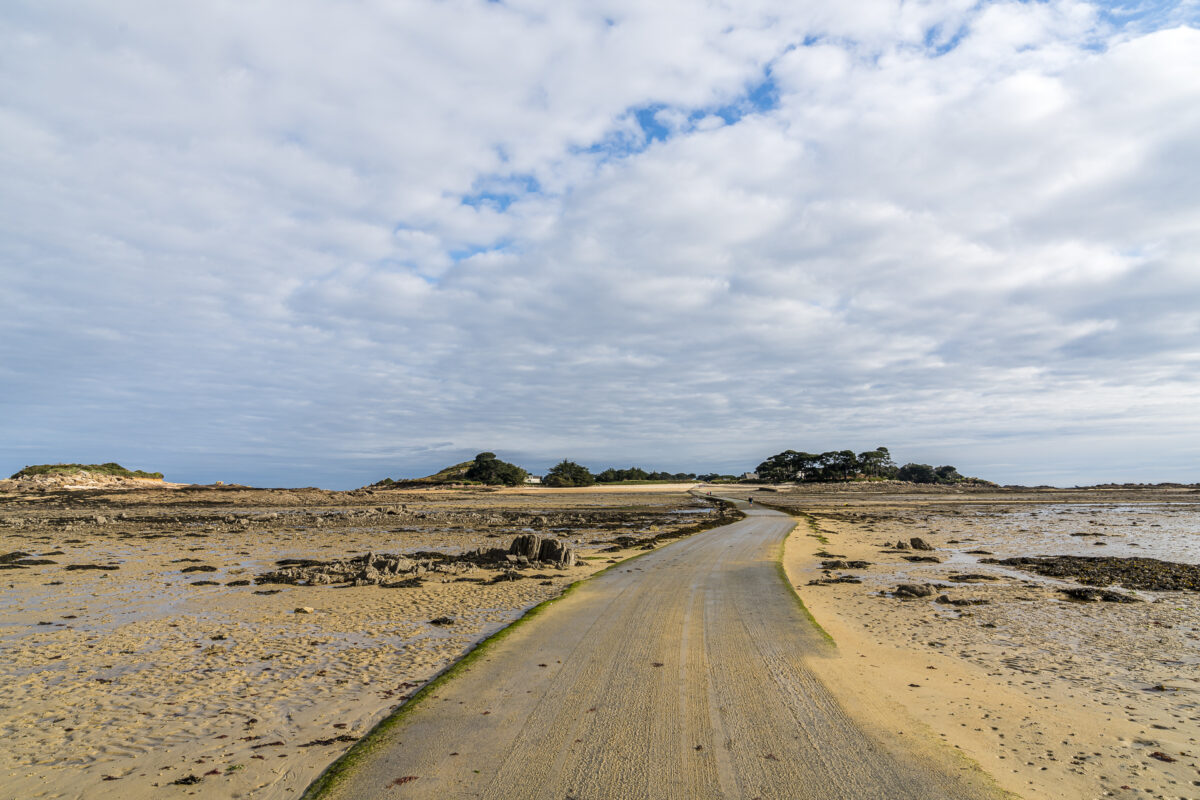
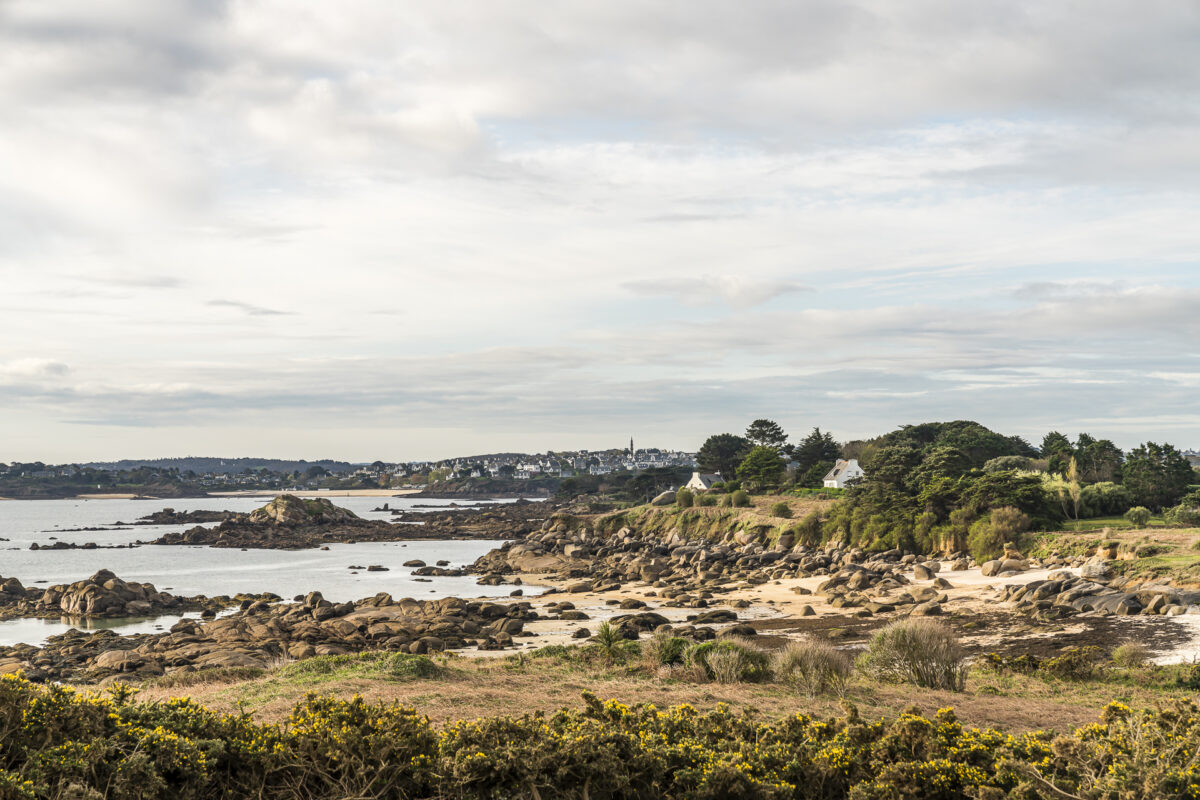
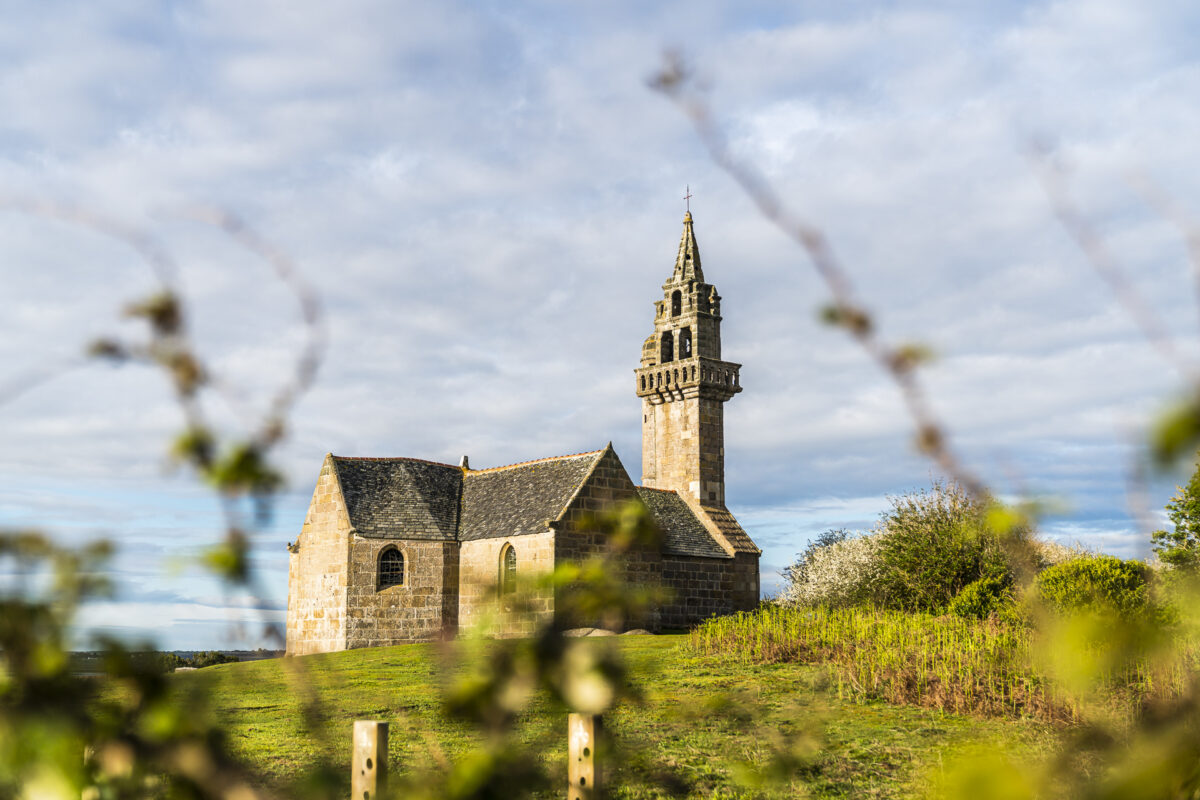
Important note: Be sure to inform yourself about the tide course in advance. A corresponding PDF is linked on the Baie de Morlaix website.
14. Valley of the Saints
Now our last stage is already on the agenda, which will take us back to Rennes via the interior. The route once again has two places worth seeing. Just over an hour south of Carantec is the so-called “Valley of the Saints”. Somewhat irritated, I realize that we are not driving into a valley at all, but up a hill. And it is not just any hill, but the remains of a feudal mound castle, as we will learn later on a guided tour.
More than 50 monumental statues made of Breton granite blocks stand around in the grass, visible from afar. These are saints who play a special role in Breton history and culture. By the time the project is completed in about 50 years, a further 950 statues are to be added (goal: 1,000 statues).
In my opinion, it is worth taking part in a guided tour. Depending on the season and day of the week, you can also watch the artists developing new statues.
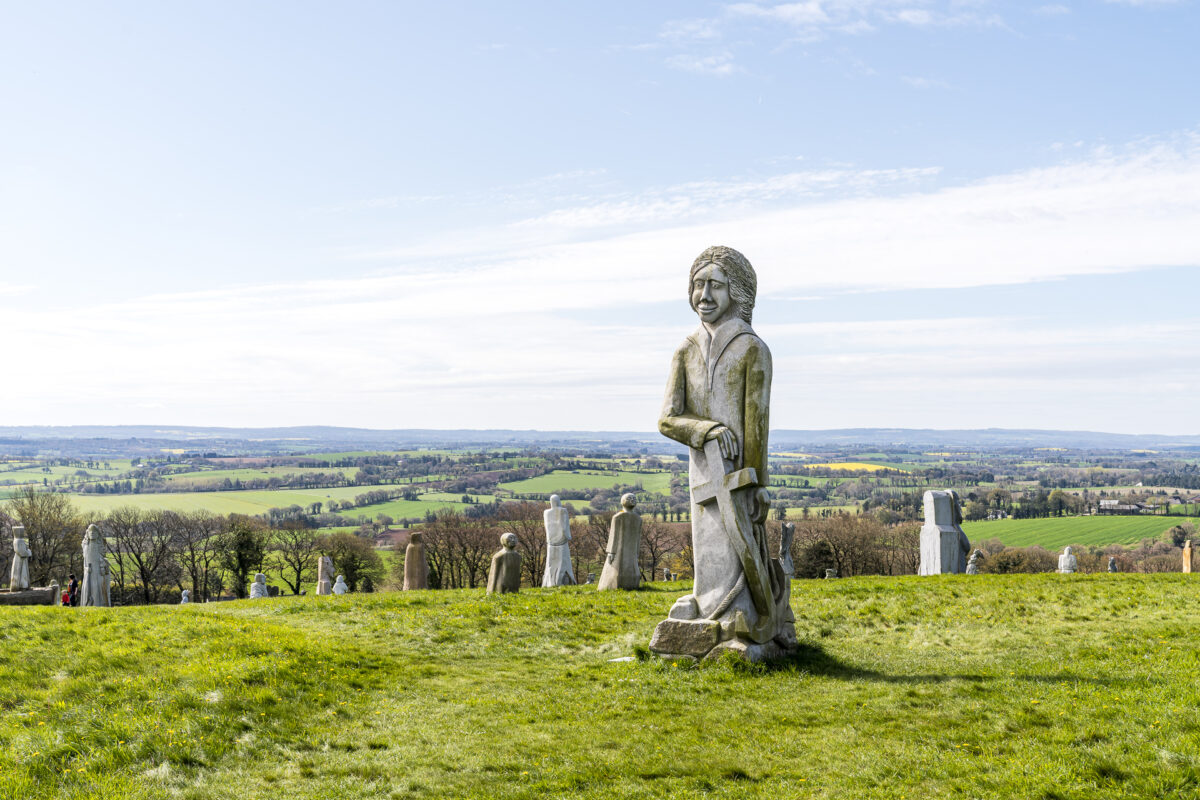
Guided tour: Duration 45 min | 5x daily |7 Euro for adults | More info: www.lavalleedessaints.com
15. The Château de Josselin
For the finale, we have saved a special piece of jewelry with Josselin. Josselin was once the residence of the Dukes of Rohan. This is evidenced by the impressive castle backdrop. Like Guingamp, Josselin also bears the title of “petite cité de caractère bretonnes”. Accordingly, the city center around the Basilique Notre Dame du Roncier presents itself pretty and spruced up. The lower-lying district of Sainte-Croix with its pretty half-timbered houses is also worth seeing. The visit to the castle, including the parks, and a short tour of the city takes about two hours.
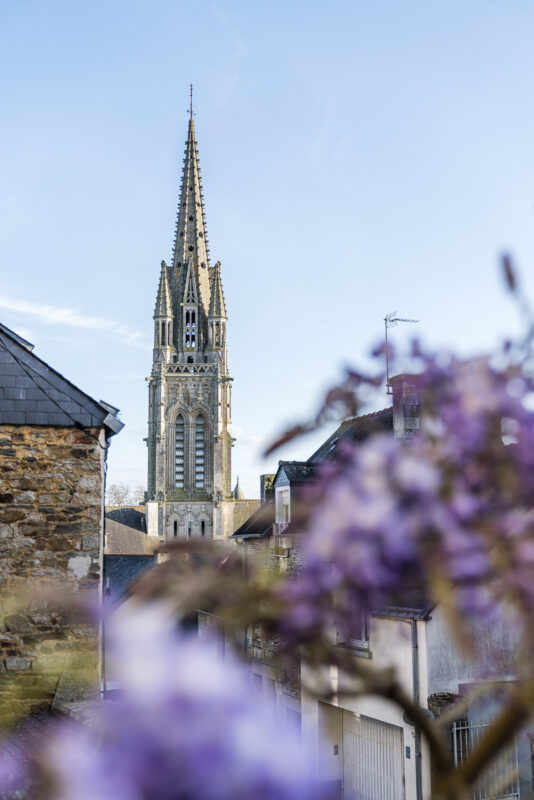
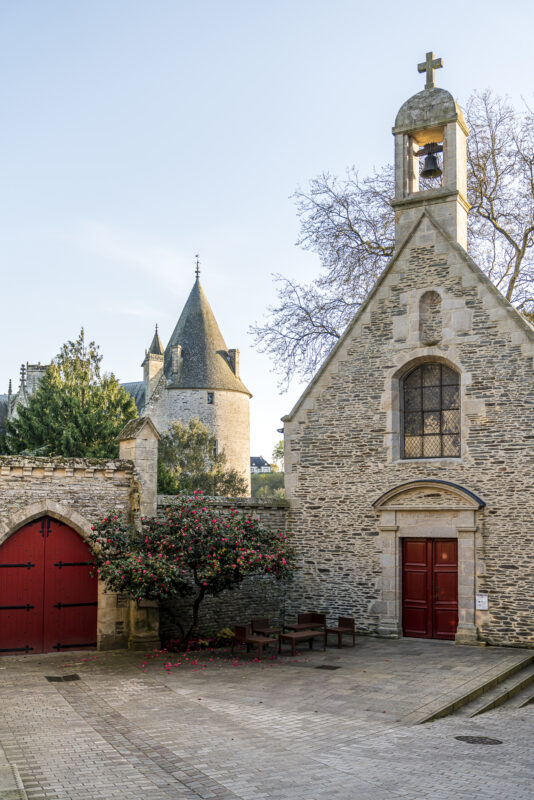
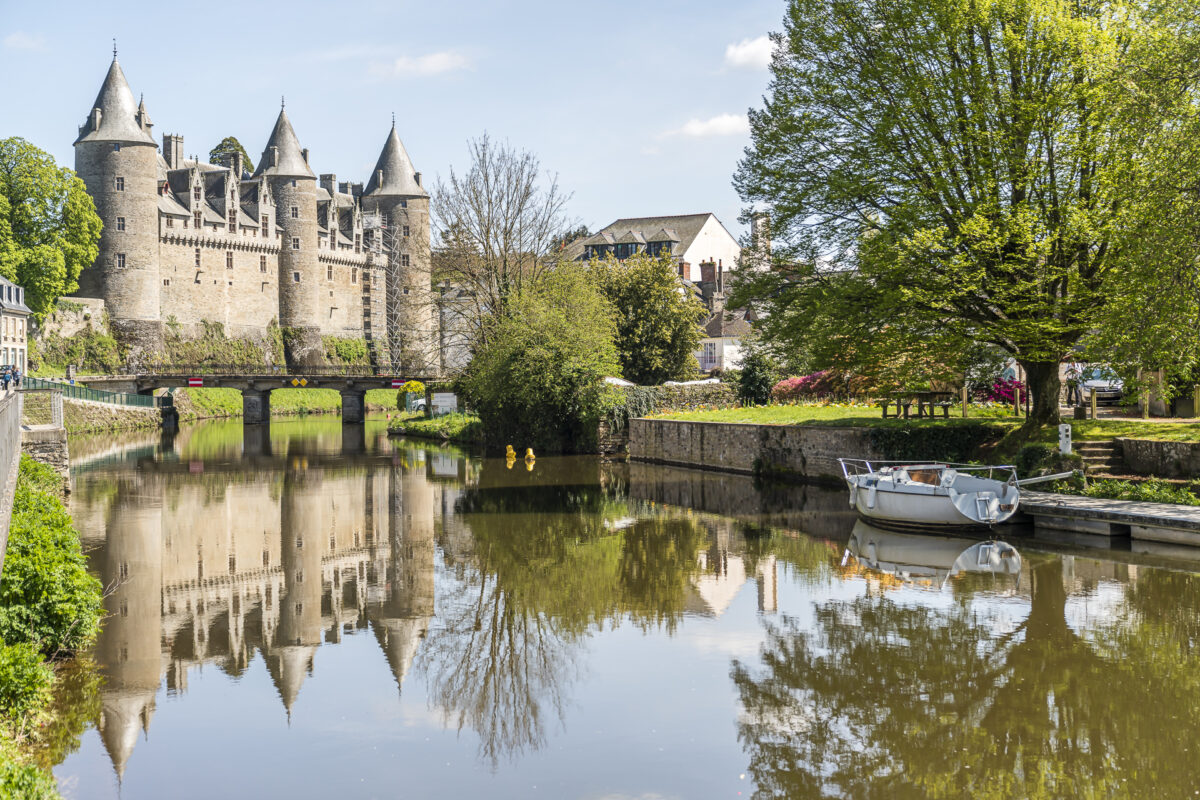
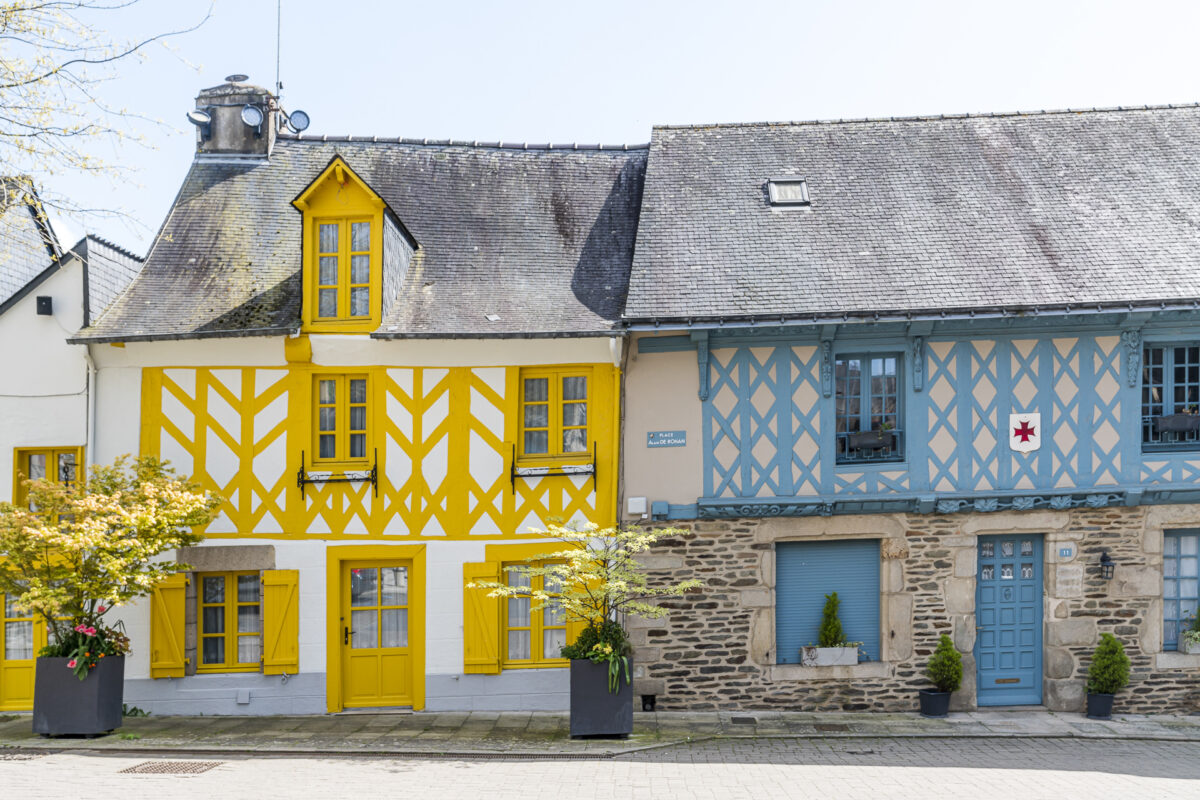
Our hotel tip for Josselin
A stone’s throw from the Basilique Notre Dame is the guest house le 14 St-Michel. Like L’Ardoisière, Le 14 St-Michel is a member of Charme Bretagne and rightly so! The guesthouse is located in an old stone building in a prime location and inspires us with a harmonious furnishing style. Perfect for strolling through the picturesque alleys of Josselin in peace and quiet in the gentle evening.
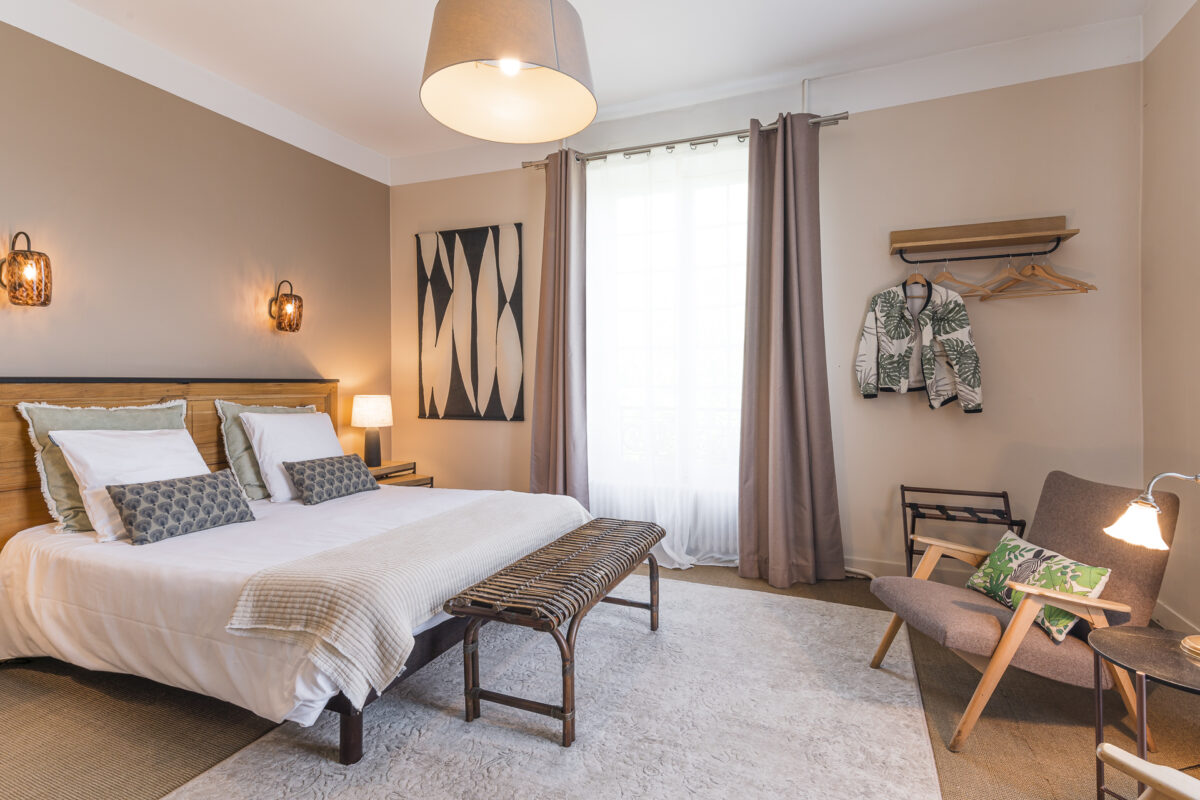
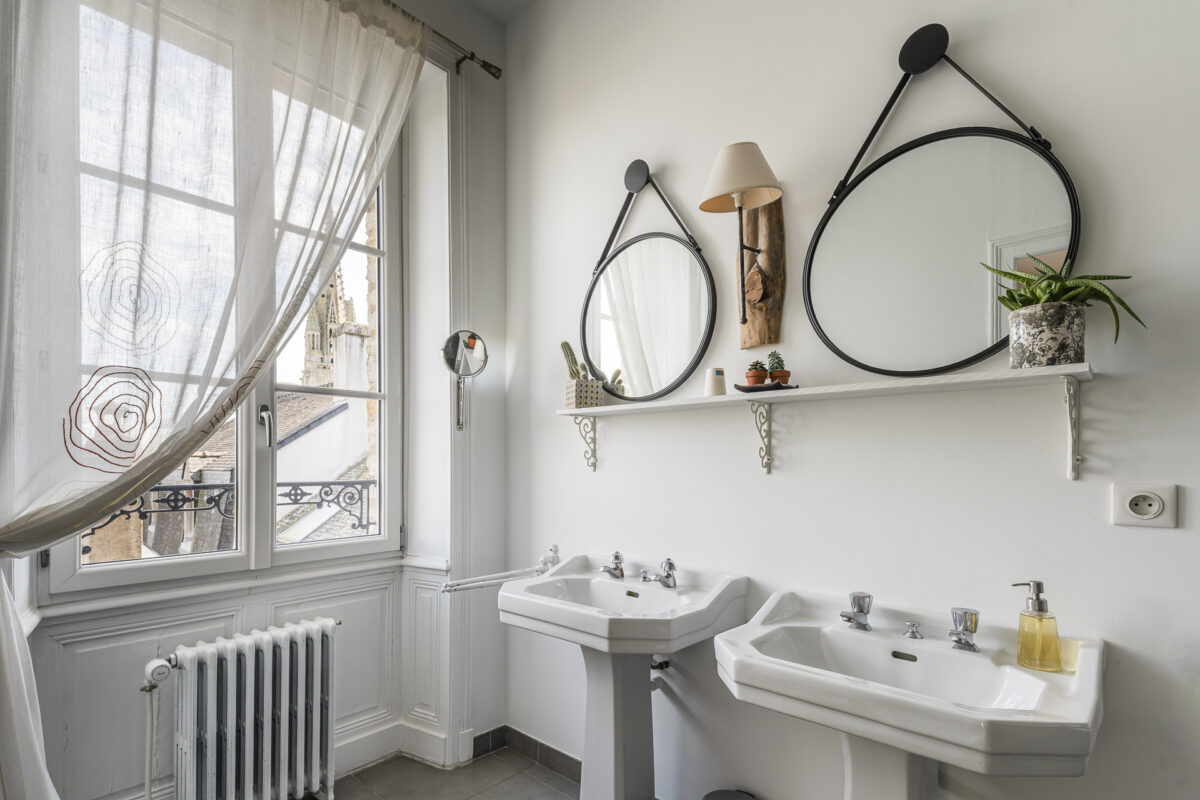
Our restaurant recommendation in Josselin
Last but not least, two culinary tips for Josselin. The Biscuiterie Merlin delighted us with their homemade ice cream. You can also stock up on typical Breton pastries, such as Kouign-amann.
And the restaurant Chez Simon scores with a friendly service and a simple but well-cooked dishes.
Practical tips for your trip to Brittany
I recommend travelling by train. The best train connections are from Zurich to Rennes in 6 hours and 51 minutes with a single change in Paris. In Paris, the station has to be changed. The transfer time between the Gare de Lyon train station (arriving from Zurich) and the Paris-Montparnasse train station is already included in the arrival time above.
If you travel to Brittany by train, you can rent a car directly at Rennes station. The usual car rental companies such as Avis, Europcar, Hertz and Sixt are present there.
We were on the road for a week (7 days/6 nights) and didn’t see everything of Brittany. In my opinion, you get a good first overview within the framework of a one-week round trip. If you want to discover even more and stay longer in individual places, you should plan two weeks for the round trip.
The Breton climate is characterized by the Gulf Stream and is characterized by temperate, mild winters and not too hot summer months. We made this trip in mid-April. But I’ve also been to Brittany in winter and find that the region has its charm in all seasons. One advantage of spring (April/May) is that there are significantly fewer holidaymakers on the road than during the high season in June/July.
Brittany is characterised by a particularly multifaceted coastal landscape. Depending on your personal circumstances, you can either head for wide sandy beaches, rocky cliffs or even the extensive forests inland. Personally, I particularly liked the bay of Morlaix and the area around Locquirec.


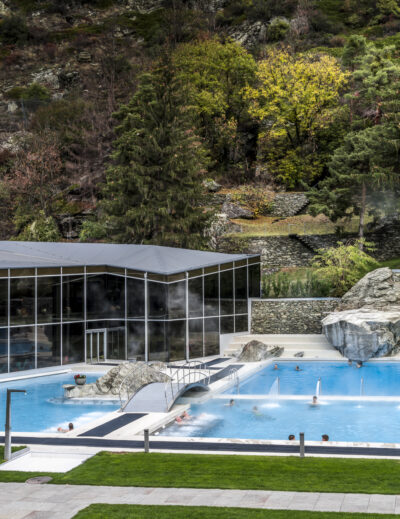
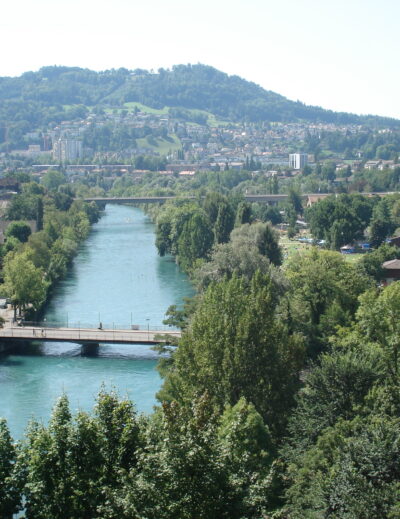
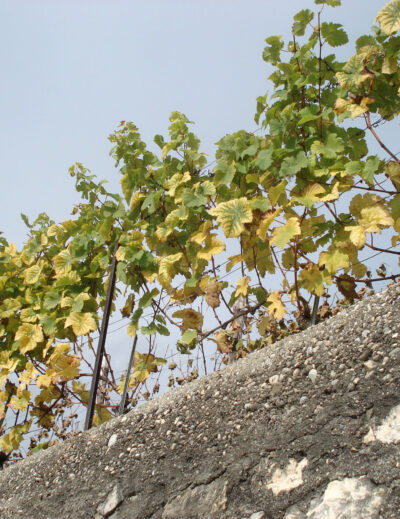
Leave a Reply